A reader recently wrote in requesting a post on the time I spent living in a converted van. More recently I reviewed a book about U.S. travel that sparked quite a few questions and comments, so here it is, ruminations on #vanlife. This post will be a little more personal than most. I hope you enjoy it.
This article contains affiliate links.
Why am I writing this? First, because you guys asked for it. Not that I write everything you ask for, but that was a motivation. Second, I want to remember this stuff. I’m aging, like everyone else, and I’d like to have some of this committed in story format, somewhere. Thirdly, selfishly, I want to have something to point to when people ask me about my time in the van. As I said earlier, I hope you enjoy it!
I was on a SAR deployment last night, talking to a new teammate about my time living #vanlife. It compelled me to go back and re-read this story which was originally published on 06/13/2021, and I’m glad I did. It is one of my favorite pieces of my own writing, so I though I’d push it back to the forefront. I hope you enjoy it!
First, the Backstory
A credo by which I’ve always attempted to live is, “an adventure is an inconvenience re-imagined.†” And with quite a bit of inconvenience did I find myself when one of the greatest adventures a man could have presented itself to me. Several years ago I had moved across the country to the high desert east of San Diego. I had come here for a relationship, and that relationship wasted no time in failing. I had no desire to hang around any longer than necessary. In a nutshell: man moves cross-country, gets dumped in short order, needs to figure himself out. Pretty simple story, and probably one as old as time.
Unfortunately, I didn’t really have anywhere to go. Or rather, I really didn’t know where to go. I’m not from San Diego, or California, or even from the western half of the country. Even if I had been, am I going to move in with my parents in my 30s? Not only that but California living didn’t really suit me (travel there is a different story – I absolutely love visiting San Diego) so it’s not like I was going to go out and lease an apartment there, even if I could have afforded it (I couldn’t). But neither did I want to run back to the last place I’d been because I’d only been there for work. I realized quickly that I was sort of a man without a country. What to do, what to do.
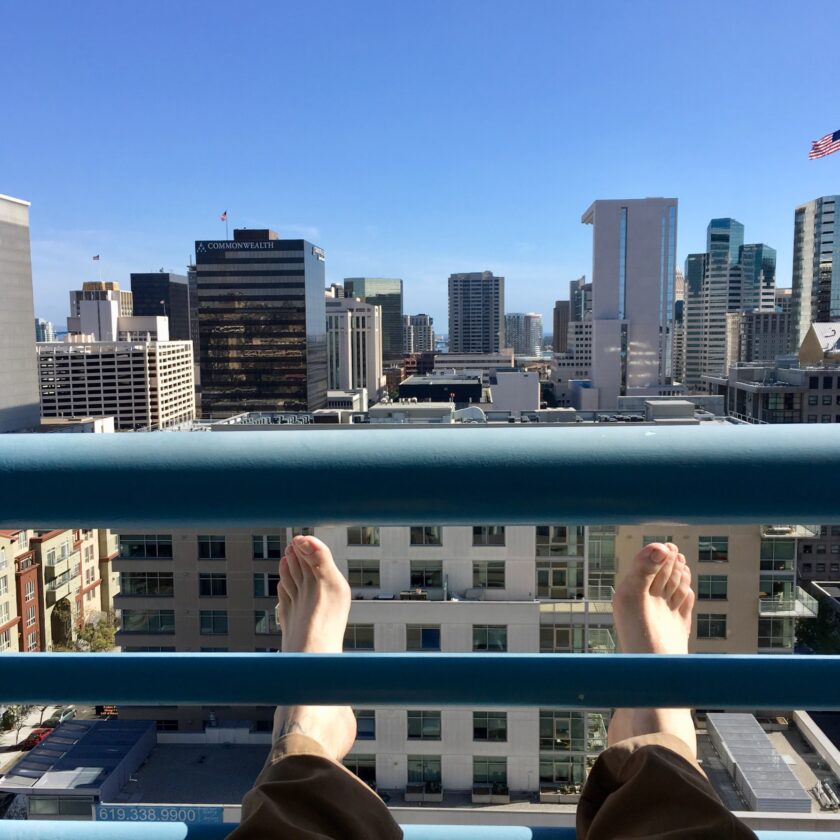
Then inspiration struck. Or rather, I stumbled on some British guy’s early #vanlife blog. The concept appealed to me tremendously. Maybe it appealed to me more than most because as a teenager I’d worked in grocery store, then briefly in a factory before joining the military. During those jobs I fantasized for hours about winding my way across the U.S. in a pickup with a camper cover, a metal cooler, and a Coleman stove. Obviously I never did that as a teenager, but here, at 30-something opportunity seemed to be knocking. Maybe it appealed to me so much because it seemed, dare I say it, possible?
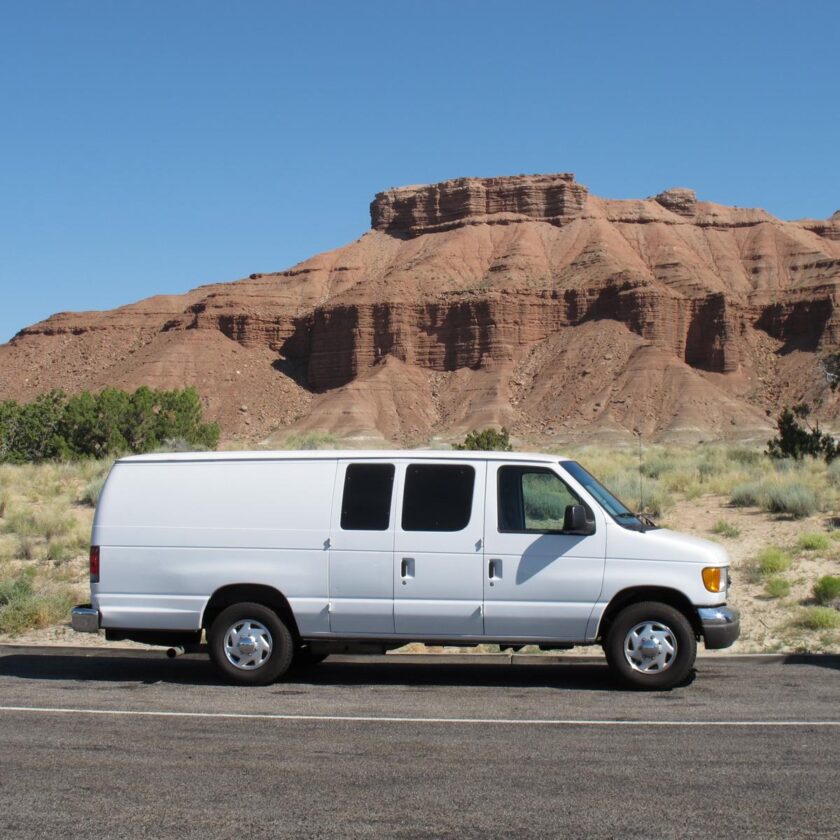
Wanting out of my relationship and SoCal, but having the luxury of a little time, I took a couple weeks to sell my car and buy a van. The van I got was a big, long, diesel E-350 cargo model. I’m not going to spend much time talking about that van because, to be honest, I didn’t do all that much to it. I put a hard, level floor in it, threw in some insulation, built a bed that doubled as storage, and threw my earthly possessions into it. I would later buy another van that I completely converted, but today I’m going to talk about that initial foray into van life because it was the most exciting and frankly, the most terrifying.
So I had a van. Now what? Well, it was May. I had promised to be at a friend’s wedding in August, in Livingston, Montana. Other than that I had no plans and nowhere to be. I decided to go where the wind blew me, and I did! Along with my year-old German Shepherd I put SoCal in the mirror and embarked on one of the greatest experiences of my life, one that I doubt will be replicated.
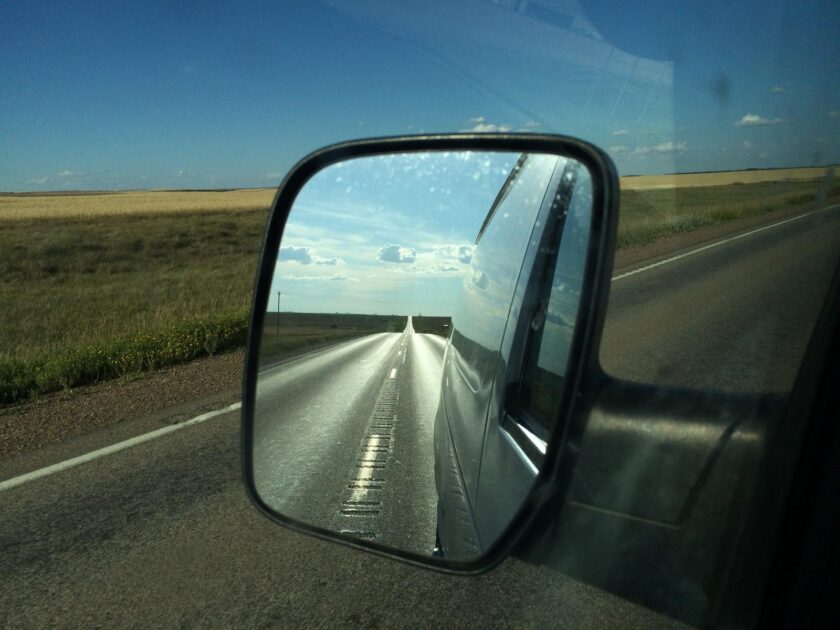
So, let’s talk about it! Let’s begin with basic logistics. A lot of people have questions about logistics – what did you eat, where do you go to the bathroom, how did you sleep, etc.
Basic Logistics: Sleep
Let’s talk about sleep first. I had two options: I could sleep in the van on the bed I built, or I could sleep in a tent. I built a reasonably good bed in the van. It was narrow but long enough for me. I bought a memory-foam mattress topper, cut it in half length-wise, and doubled it up. On top of that I added a set of sheets and a blanket. The only problem with sleeping in the van was heat. This was June, July, August, September time-frame. It was hot.
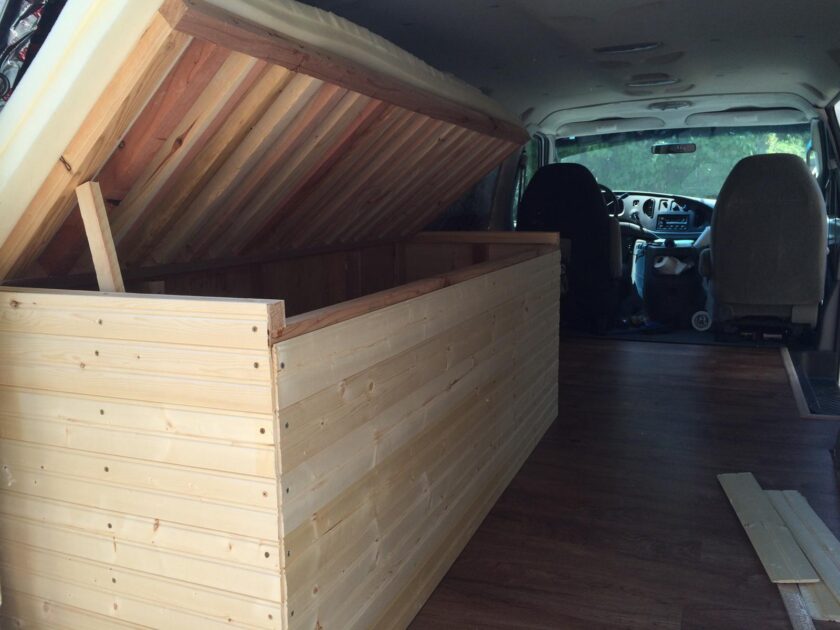
Generally I slept pretty great in the van when we were in the woods. The woods were dark, the woods were quiet, and the woods were much cooler than the asphalt. The irony is that in the woods I could usually find someplace to pitch my tent and get out of the van. That wasn’t always true – I opted for the van during some rainstorms (it was super, super nice to have the van during rainstorms) but it was true often enough. Unfortunately in and around cities and towns is where we had to sleep in the van.
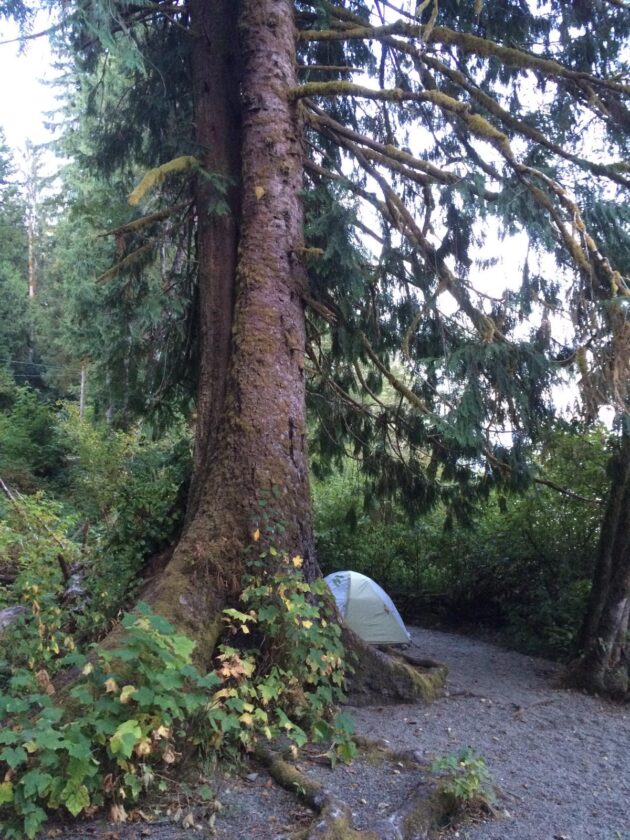
Being in cities and towns created a couple of problems. First, where to park? A lot of places don’t want vagrants, campers, and nomads spending the night in their parking lots. If there’s a Walmart around, you can almost always take advantage of their parking lots; Walmart is famously RV-friendly. I’m sure it works in their best interest as RVers spend money in the store, but it’s also nice for you – you wake up to a bathroom readily available. I would say that a Walmart parking lot is also a pretty safe spot to spend the night – I’ve never had a bit of trouble.
Walmarts aren’t always available, so you might have to fall back on a backup and hope you don’t get noticed. This is called “stealth” camping. Rather than try to park in some secluded area, I generally tried to blend in and park with a bunch of cars. On a few occasions I found little knots of work trucks. My big, white van blended right in – I’d just make sure to be up and out bright and early. Another good option, in my opinion, is hotel parking lots. There are always cars there, parked overnight. I would try to be as unobtrusive as possible – get everything else like brushing teeth and walking the dog – done somewhere else, then pull in ready to black-out and go to sleep.
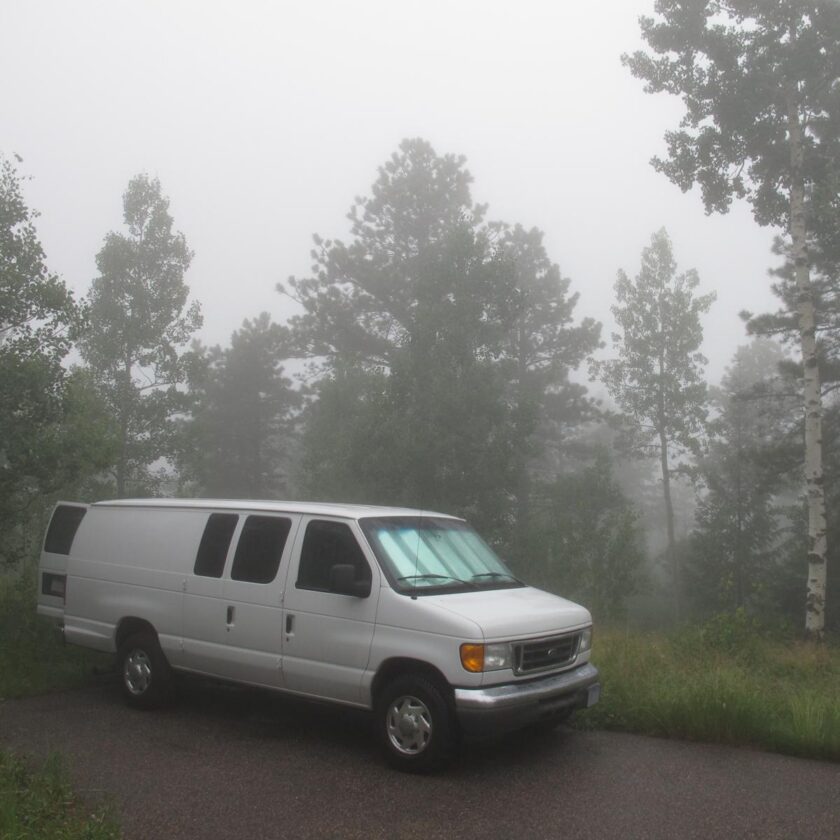
And speaking of blacking-out… The second problem with cities and towns was the light situation – both light coming into the van, and light emitting from the van. I got pretty good at blacking out the van. Fortunately the windows already had a heavy tint which helped a lot, but I still had to do some work to make it sleepable. First I would throw up a sunshade on the front windshield. This served the main purpose of blocking the main, untinted window and looking somewhat normal.
Next, I hung up a blanket right behind the driver and passenger seats, which made the cargo area feel just a bit more homey and sectored off from the cab. Finally – and I never got to a great solution for this problem in this van – I taped up black towels over the side and rear windows. These cut down massively on the light from parking lots. They also let me sleep easier, knowing no one could look in on me. Unfortunately they made it impossible to have any kind of ventilation…hence the reason towns were sort of a last-resort option for camping.
Basic Logistics: Food & Drink
I’ll tell you all about food and drink and guess what? It won’t take long! Unfortunately my diet wasn’t terribly varied on the road. If I had it to do over again I think I could do it better, but I’ll report what I actually did.
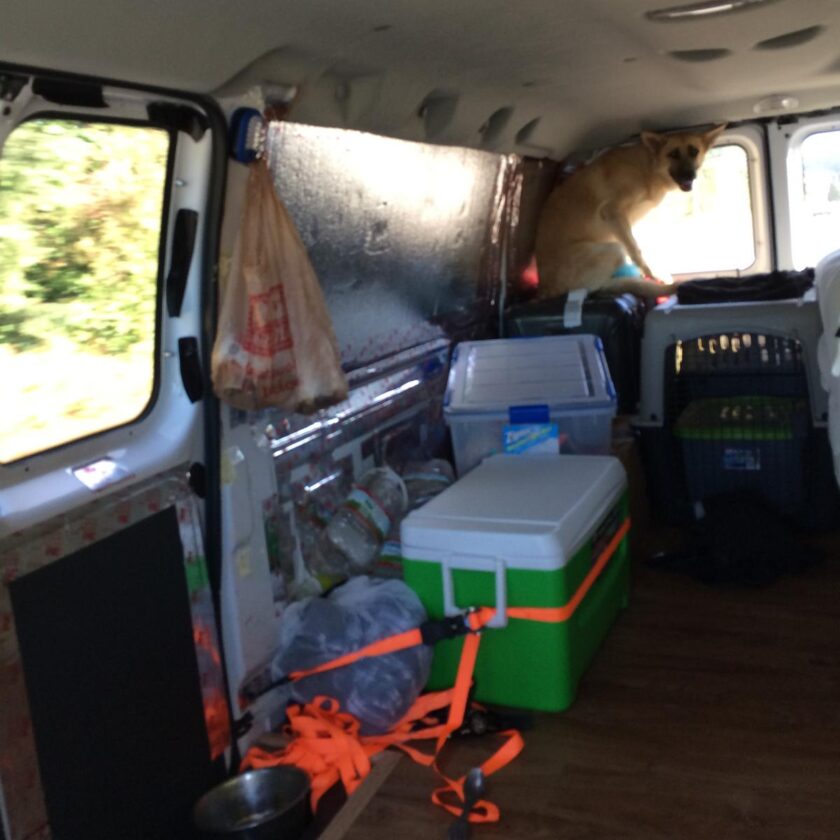
First things first: the basic kitchen tools. My kitchen didn’t consist of much. The cooking was all done on a JetBoil Flash. I can’t say enough good things about the JetBoil – I’ve had this one for probably ten years now and it’s still doing great. If I hadn’t already owned it I probably would have bought one of these for 1/5th the price (I have one now and it works great, too). Next up is the plain, old stainless steel cup – no need for ultralight, ultra-expensive titanium here. This thing was my cup, my eating bowl, my mixing bowl, my berry-collecting basket…pretty much whatever I needed it to be. And, I ate pretty much everything with a Light My Fire Titanium Spork. OK, I chose titanium here because a.) the Light My Fire spork is absolutely the best spork out there, and b.) the only alternative is plastic which – believe me – breaks). I did have a small cutting board and a small chef’s knife… because cutting veggies with a pocket knife is hard.
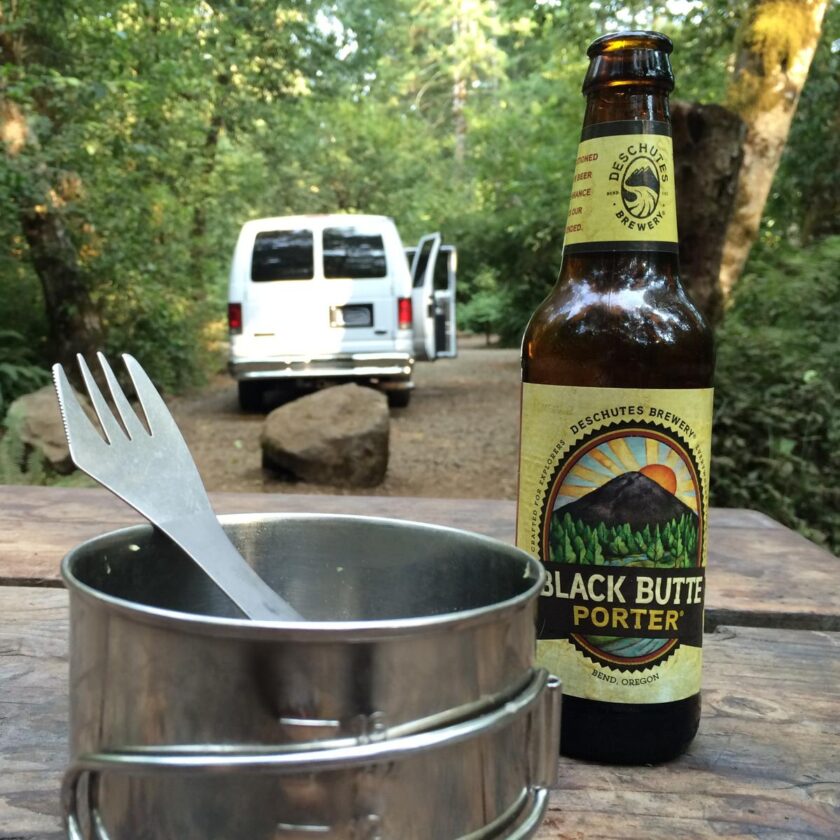
Secondly, my morning revolved around coffee. I’m not usually a first-thing breakfast eater but I really, really like coffee. As long as I had my JetBoil with which to heat water, I had coffee. I may have talked about my coffee setup before, but I’ll mention it again. It consists of a travel mug (nowadays mine’s a Yeti, back then it was a really good, stainless steel Starbucks mug which, of course, was discontinued about a week after I bought it). Next, I still to this day make my coffee in an Aeropress. It’s compact, fast, makes a great cup, and requires minimal cleanup. Finally, I had a Kyocera manual coffee grinder with me. It’s a super good, conical burr, ceramic grinder. To be frank, I could live without it; the Aeropress really makes the most out of even cheap coffee. If you really must have a grinder and balk at the Kyocera’s price-tag, check out the Hario Skerton coffee mill. I’ve owned both and I can’t tell them apart. Sorry – that went on longer than I anticipated. I really like coffee.
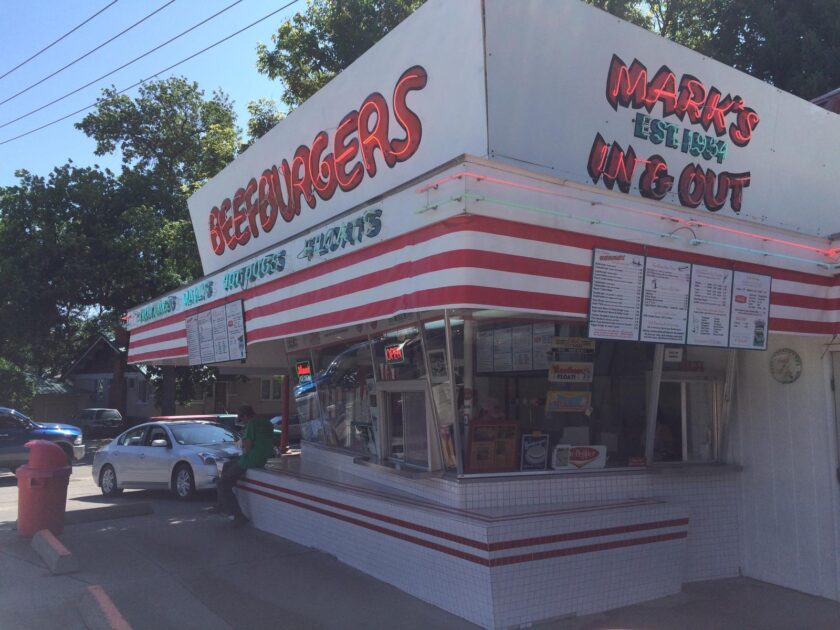
Now let’s get to what I actually ate. Like I said, my diet didn’t get terribly varied. I mainly subsisted on instant oatmeal (peaches and cream flavor is by far my favorite), salads, and ramen noodles. I tried to fortify ramen noodles with veggies as often as practicable – I’d drop in a big handful of chopped carrots, onion, bell pepper, jalapeno, spinach…whatever. Just something to give it a little bit of texture and flavor. I also carted around a small bag of potatoes that I would cook in my firepit when I built a fire, and I grilled the occasional steak. Sometimes I made sandwiches, sometimes I ate fast food (though I really tried not to because of expense), and once in a blue moon I ate in a sit-down restaurant.
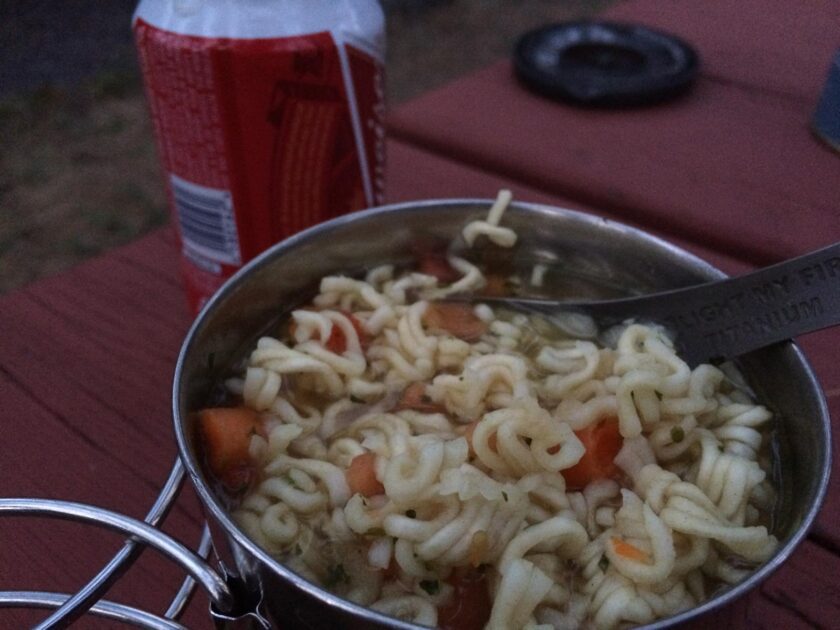
I usually kept a six-pack or two of beer in the cooler, and some other staples like cheese. I tried to hit a grocery store every three or four days to restock fresh fruit and veg – apples, bananas, berries, potatoes, onions, carrots, lettuce, etc. – though this wasn’t always possible. In the dry-goods box I kept some peanut butter, some nuts, some other staples, paper towels, a roll of aluminum foil, and Ziploc baggies. Occasionally, believe it or not, I was able to forage some food. More than once while up on the Olympic Peninsula of Washington I was able to pick some blackberries. In Montana I found blueberries in season and added them to my oatmeal. Once or twice I added some chicory greens off the side of the road to my cup of noodles.

Basic Logistics: Money
I get a lot of questions along the lines of, “how did you afford to travel all the time?” One lesson I learned (and we’ll shortly get into the “lessons learned” section) is that travel isn’t all that expensive. The only truly expensive hobby is buying stuff. So, I tried to buy as little stuff as possible.
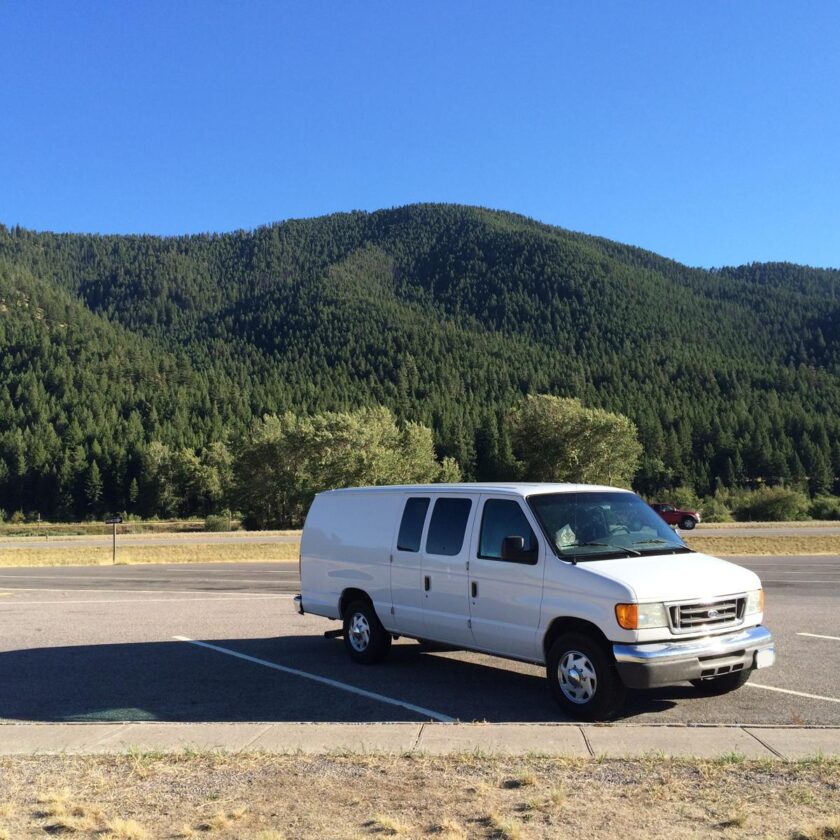
Here’s the deal: I didn’t have a lot of money at all during this time. I might’ve had a couple thousand dollars. I also had some credit card debt. I wasn’t rich by any stretch of the imagination. I had a book royalty or two come in, and a check or two from a “NET90” gig (you contractors will understand that; for everyone else that means you get paid No Earlier Than 90 days later) here and there. I flew out and worked a couple single-digit-day gigs. That’s it. I didn’t have hundreds – or even tens – of thousands of dollars in the bank. I had a little walking-around money and a little bit of debt.
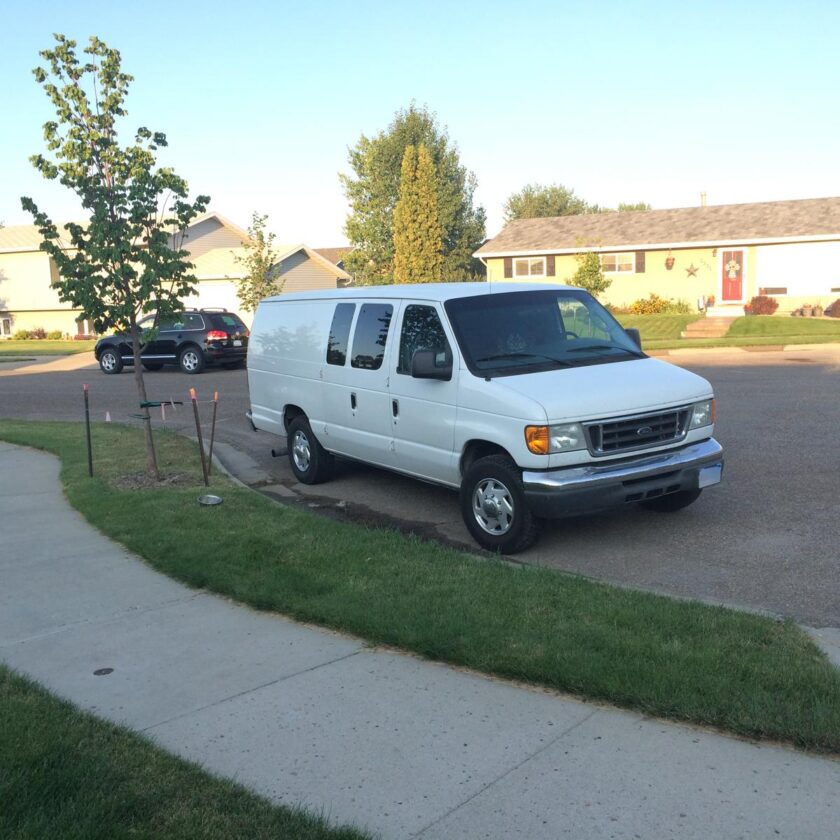
So how did I do it? First, I spent very little. I bought groceries rather than eating out. Though I enjoy a beer at a bar, especially when traveling with the chance to meet people, I tended to prefer a six-pack and a campsite. During the entire 4+ months I spent four nights in a hotel, which is it’s own side-story. The first night I spent in a hotel was just outside of Portland, OR. It was heat-wave hot and I needed a break. I checked in around 3 PM and took a shower. As soon as I got out of the shower I realized I couldn’t get up the next morning and move again – I needed one full day of AC, showers, and a real bed. So I booked one more night, bought a 12-pack, ordered a pizza, and watched TV all night. It was glorious. All of the nights I spent in hotels (four, in three stays) were paid for with hotel points, but hotels tended to get expensive because they made me want to order takeout (the other two were in Yakima, WA, and Cincinnati area of Ohio).
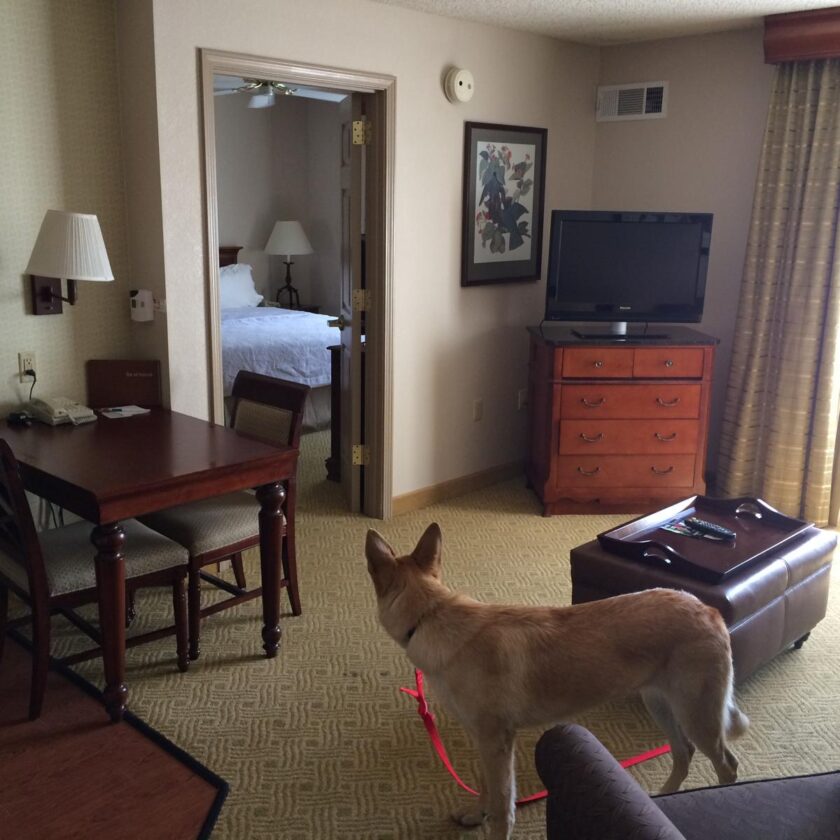
When I did have to spend money I would try to save as much as possible. Most campgrounds cost money, but stealth camping is free. As a veteran I’m also eligible for a Golden Access Pass – I get into, and can camp in National Parks free of charge and camp at a reduced rate. My biggest recurring expense was fuel. Though diesel is more expensive, it also gets better fuel mileage. Believe it or not I actually got great mileage from the old van – probably in the neighborhood of 25 MPG or so if memory serves. Still, I tried to go as easy on fuel as possible, though some nights I would run the van for a long time, blasting the AC.
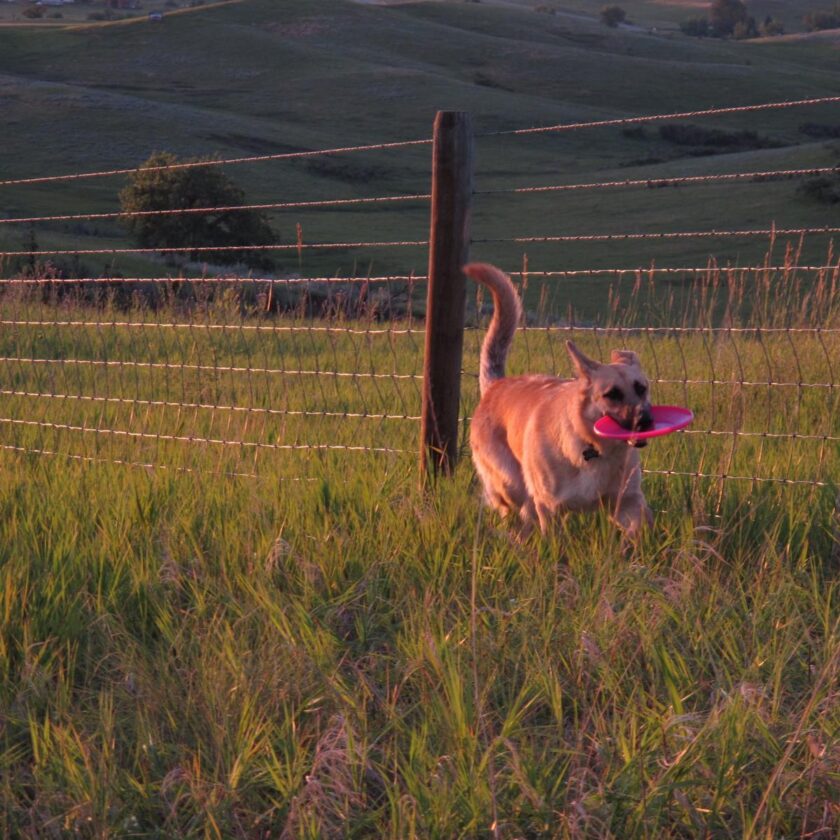
Once in a while – maybe half a dozen times in the whole trip – someone would do something nice for me and save me a few bucks. Once, in a campground, couple college-aged kids offered me some weed (I was tempted, but it’s not really my thing); later we did share food and drink with each other. Once in North Dakota a family bought me dinner, drinks, and offered to put me up for the night and asked nothing in return. Once, just outside of Spokane, an old man offered me a cigar (I declined) and some of his bourbon (I accepted); late into the evening he cried as he told me about the murder of his daughter. At the Jones Creek Campground in Oregon a couple invited me to their fire and fed me beer and kept me company; I remained friends with them for years afterward.
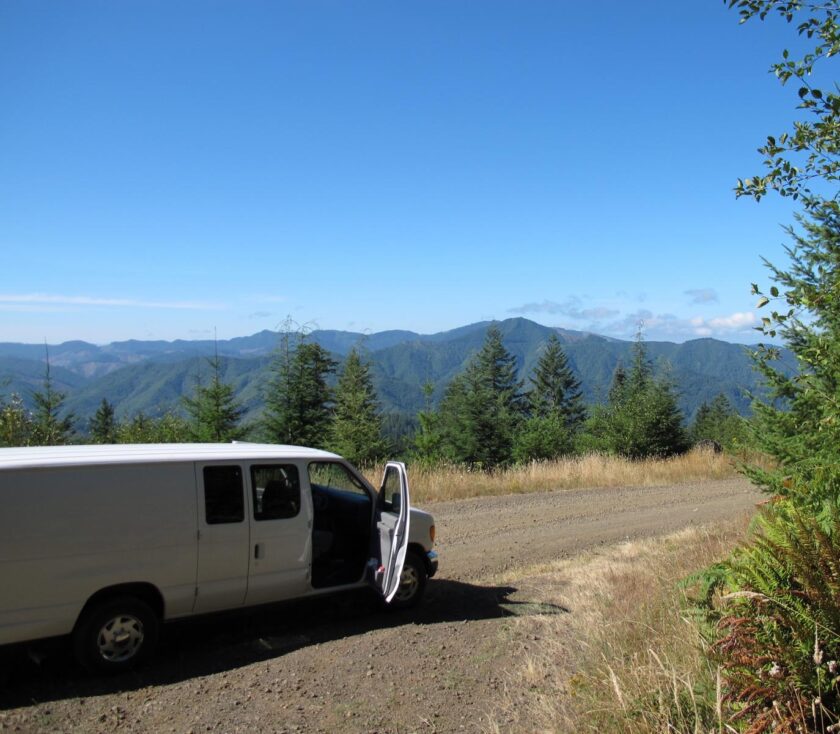
With a combination of camping, “stealthing,” indulging only lightly in my vices, and making 90% of my own meals, living on the road really wasn’t that expensive. Yeah, I didn’t get to do all the big-ticket things – eat at the five-star restaurants or go to theme parks or whatever, but I don’t see how my time could have been any better. Honestly, if you have fewer bad habits than me (I’m a social drinker, and at the time I dipped tobacco) and have more discipline than me, you could pretty easily do a trip of this length on just a few thousand dollars. Travel doesn’t have to be expensive, and I don’t think I missed out on a thing but not having spent more money.
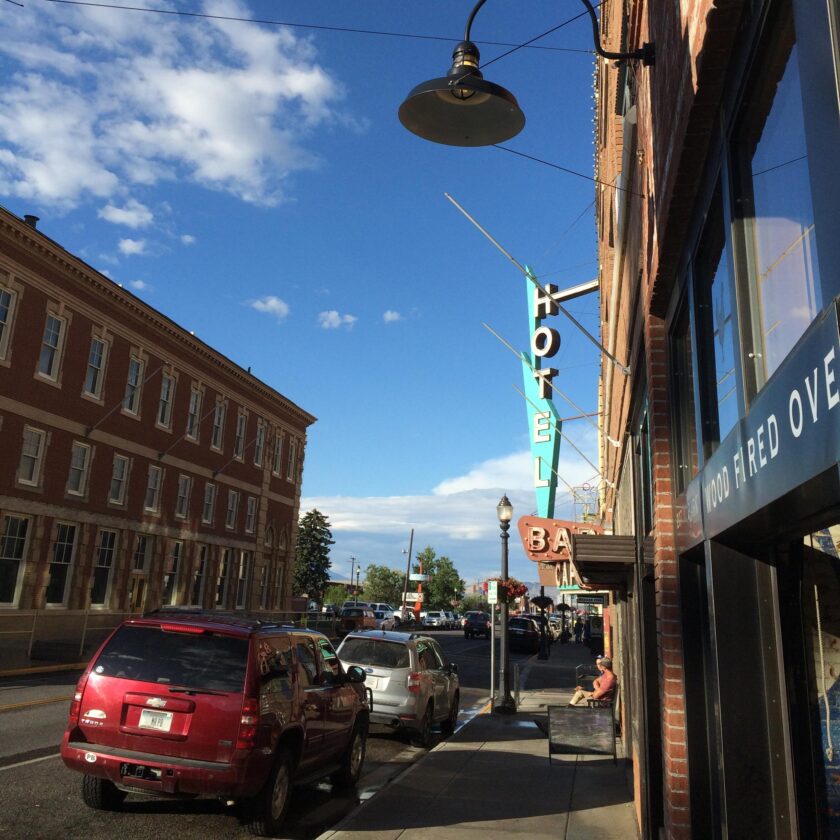
Basic Logistics: Um…Ablutions
This one doesn’t come up quite as often, but I do sometimes get asked how I handled showering and other bodily necessities. I guess the bottom line is, there aren’t any shortcuts. At least when it comes to using the bathroom. Being a first-thing-in-the-morning kind of guy, I tried to bed down fairly close to a restroom, whether at truck stop, a Walmart, or a some other facilities. Failing that….well, there’s always the woods, so ALWAYS keep a roll of toilet paper or a pack of wet-wipes handy (and please don’t leave your wet-wipes on the ground). And, of course I’d be lying if I said I hadn’t used a pee jug from time to time…
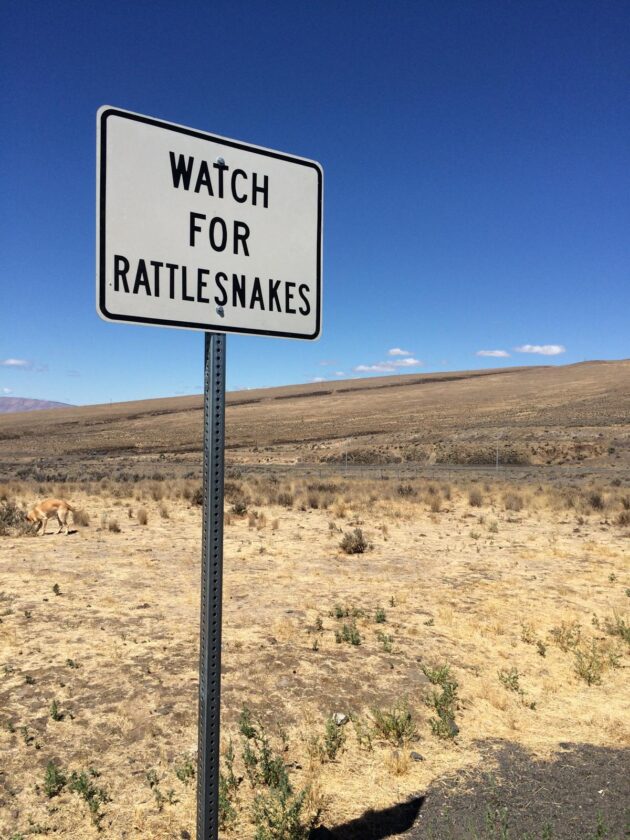
As far as showering goes, maybe I did find a shortcut or two. First, I showered when I could. In the last section I mentioned some of my living arrangements; I showered on the three occasions when I stayed in hotels. I showered when campgrounds had such facilities. Right before my friend’s wedding (mentioned in the first section) I “showered” with a bucket of water and a bar of soap in a campground. Plenty of times I “showered” with wet wipes. Later in my van-dwelling life I would sign up for a membership at a nationwide gym to be able to both workout and use the showers on the road.
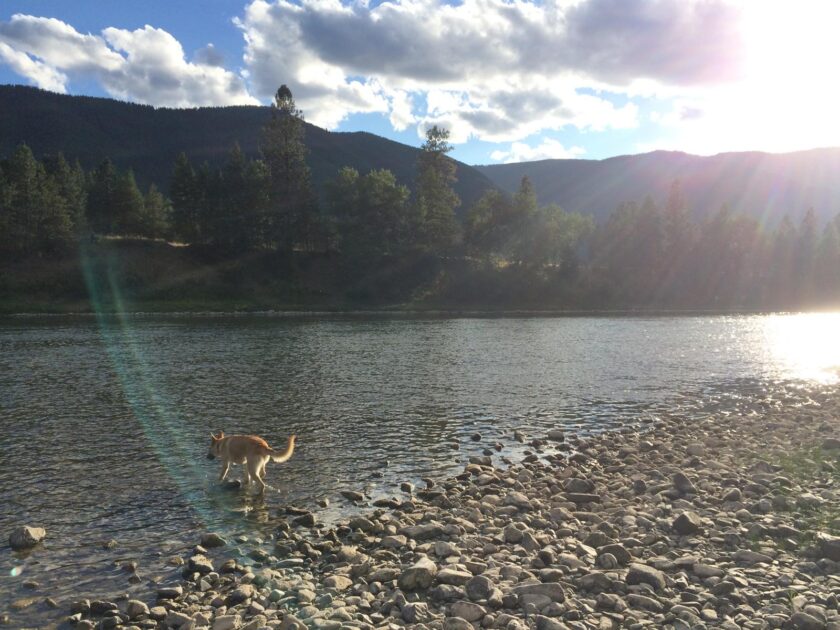
This next part might be the most controversial part of this article: I learned that I didn’t need to shower with half a dozen different soaps, shampoos, conditioners, and toners every single day. I highly recommend reading the book Clean: The New Science of Skin by James Hamblin with an open mind. I now only rinse off daily and only use soap, lightly, on my critical bits. Check out the book, I think it’s worth reading.
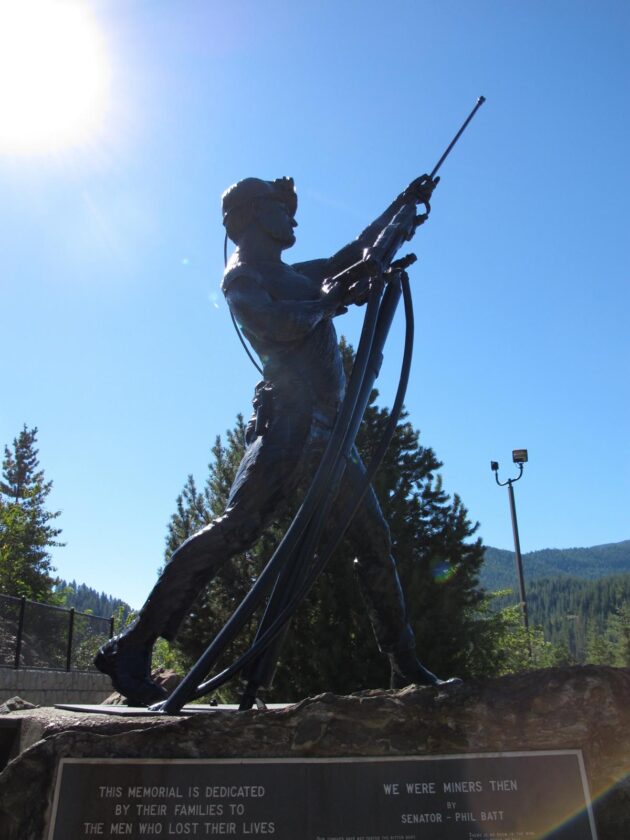
Basic Logistics: Safety & Security
On this blog I’m sure I’ll get at least some questions regarding safety and security (it is a security-focused blog, after all). Honestly, I don’t have a whole bunch to say about it.
Security: I carried a pistol (a Sig P238, the same one I reviewed here) about 100% of the time it was legal for me to do so on this trip. At no time did I feel like I might have to use it. In over four months I can’t recall a single instance in which I felt uncomfortable, sketchy, or threatened. In any way. Not that I don’t recommend taking precautions, but I didn’t encounter a single thing that made me question my security. If I could do it over again I would definitely have carried a non-lethal option like pepper spray (much more broadly legal), and I probably would have added a can of bear spray to the van, for bears.
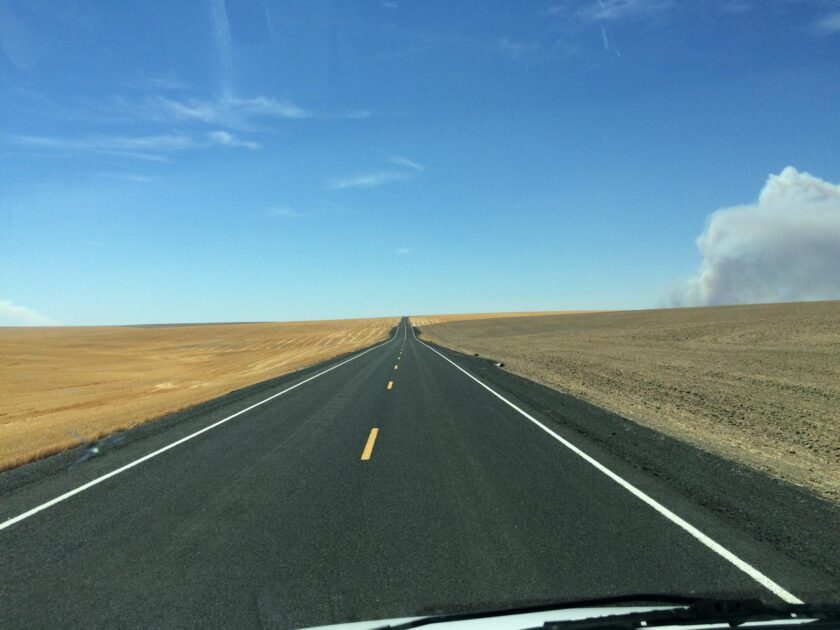
I did take one small step in the interest of safety. On the other hand it raised my profile ever-so-slightly, so take it for what it’s worth. My biggest fear was having my van broken into. A broken window would have cost a lot to fix, and the loss of stuff would have been hard to chew. Since I had a visible German Shepherd in the van I had my friend print three sets of decals reading, “CAUTION WORKING DOG.” Also, the van resembled a vehicle that might indeed haul working dogs. I had him print them in really small, grey letters so they weren’t visible from very far away and drew as little attention as possible. I don’t know if this made a difference or not, but my vehicle was never broken into. If ever asked about it I planned to lie and say that the stickers were on the vehicle when I bought it, but I never had to explain the stickers. I’m absolutely not recommending that you do this, just relaying something that I did.
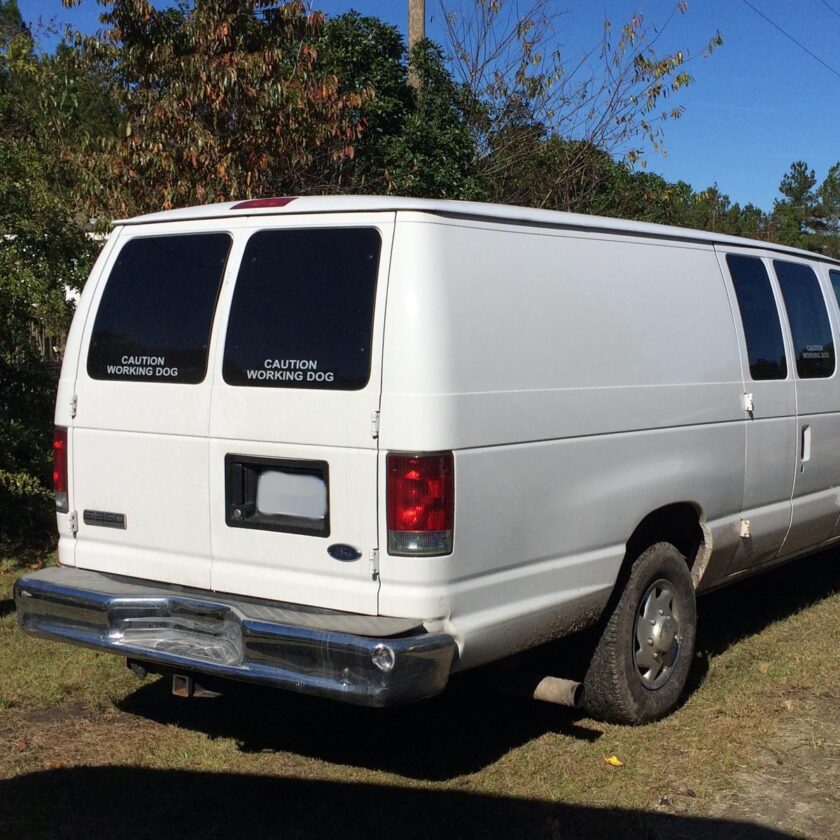
Safety: Likewise, I had no safety issues. Honestly, the most dangerous thing I did was drive for thousands of miles. I always wore my seatbelt, always used my turn signals, always pulled over when I felt drowsy (easy to do when you have no itinerary and are driving your bed around). I didn’t cook inside the van so I didn’t have any huge fire concerns. However, I did mount a small fire extinguisher in the van, and kept a decent first aid kit handy, and would recommend you do the same. When I hiked I had a small pack (a Mountainsmith Tour) with some basic survival gear, but I failed to heed my own advice about letting someone know where I was going – a mistake I won’t repeat.
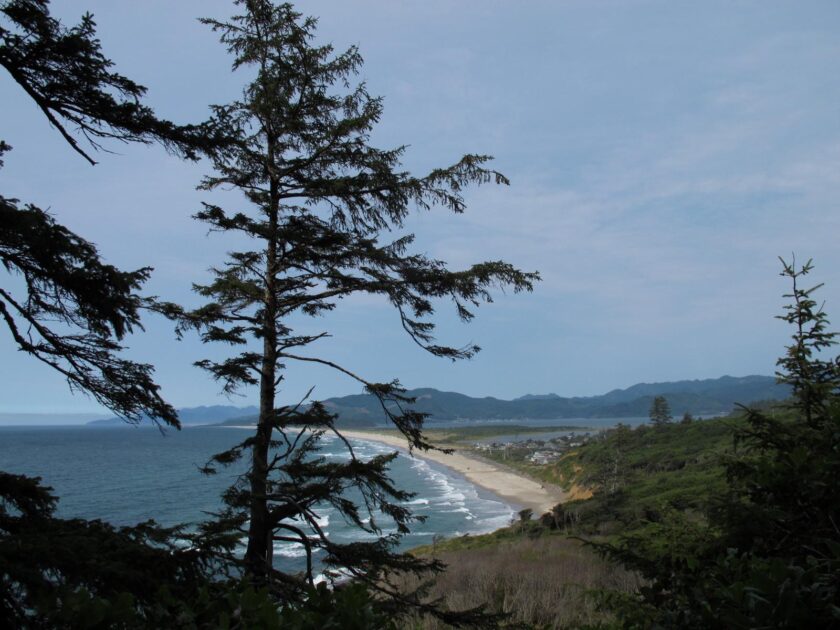
Outside of these relatively minor concerns I had no outstanding concerns about security or safety. If you are concerned about travel safety I would recommend reading Greg Ellifritz’ excellent Choose Adventure: Safe Travel in Dangerous Places (see my review here).
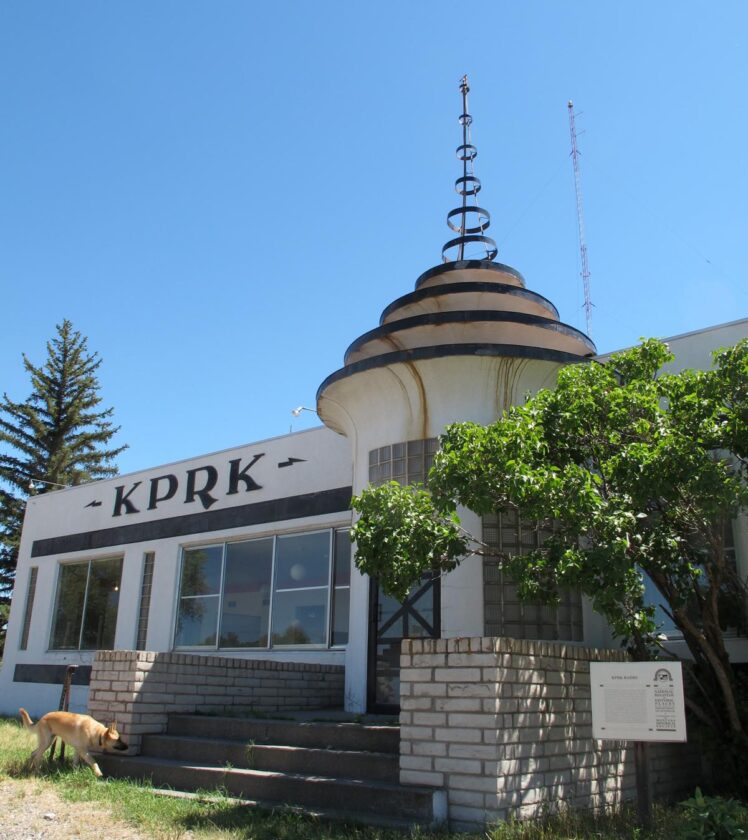
Intermediate Logistics: Traveling With a Dog
My German Shepherd and I had met only a few months before this trip kicked off. If I’m being honest, we weren’t all that close when the trip started. By trip’s end, however, we were head-over-heels in love with each other. We are still closer than I’ve ever been with a dog – changing places almost nightly really brought us close together. A dog brings some special challenges to the party, however.
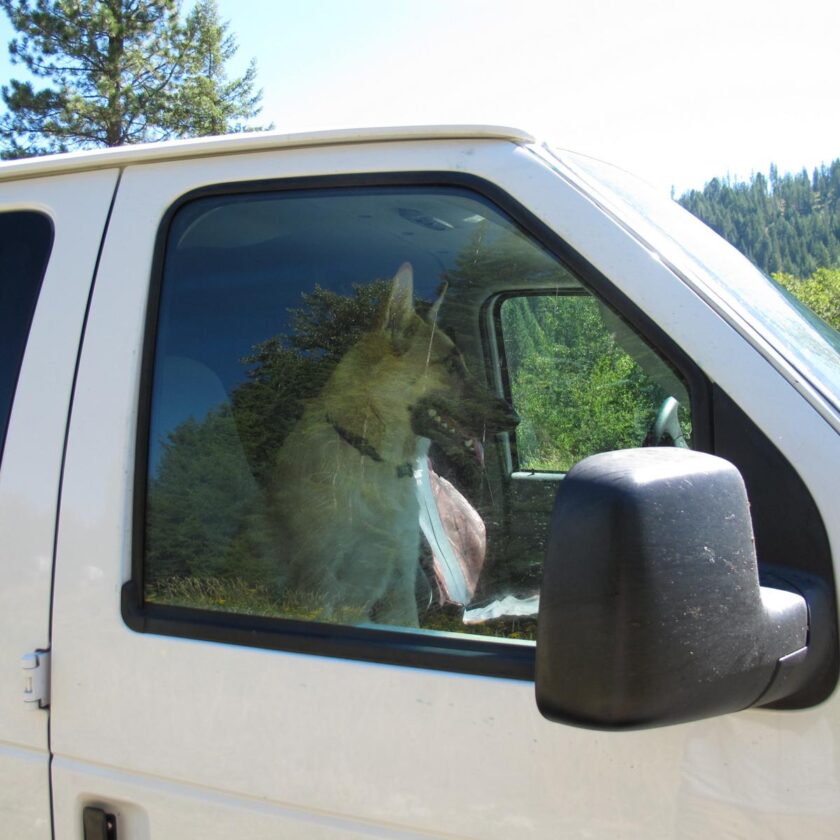
First, dogs take up space. The larger the dog, the more space, and I’m not really talking about the space the animal itself takes. You’ll need room for dog food, dog beds, etc. That absolutely has to factor into your calculus. I chose to travel with her kennel because she was trained to sleep in it, and it was comfortable/familiar to her. A kennel would probably be too large for most vehicle-based living situations unless it is a very high priority for you as it was for me.
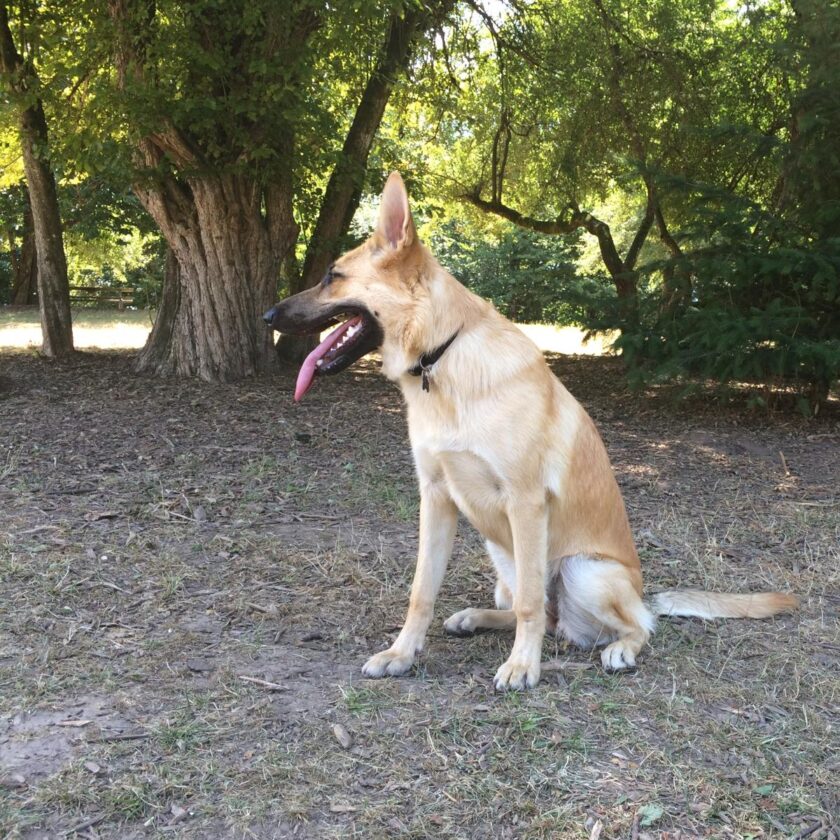
Second, your dog will take time. She will need to go to the bathroom, and it might not necessarily be on your schedule. She will need exercise and play. This is both for her health and your sanity; a tired dog is a good dog. Take the time to figure out what your dog likes – it took me a while to realize that mine won’t even get up to chase a ball but will chase a frisbee all day.
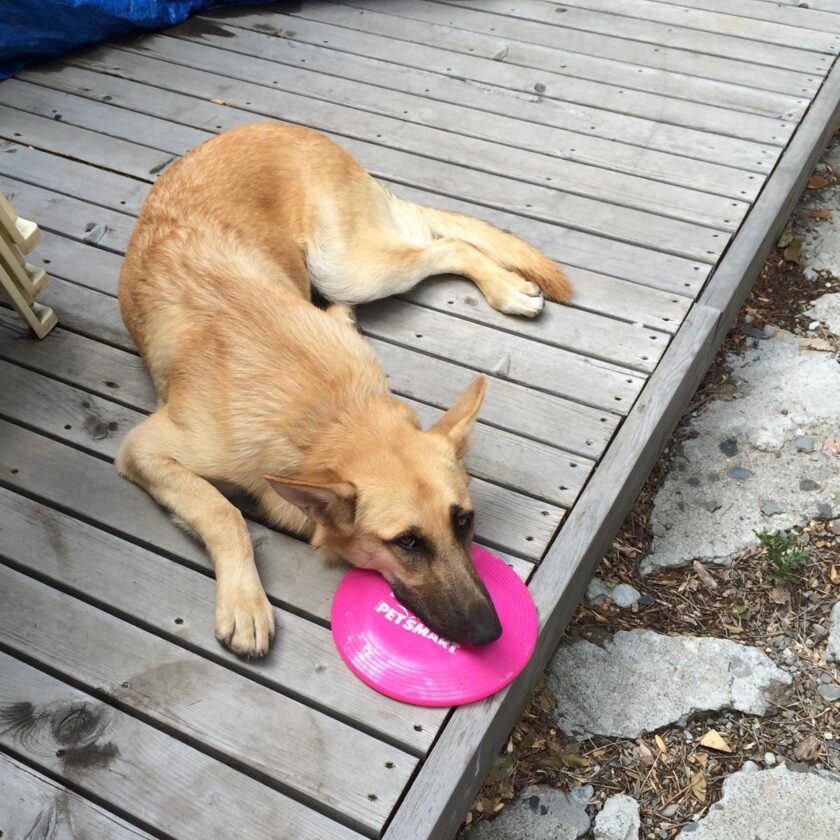
Third, your dog will also somewhat limit the things you can do. It’s hard to relax and enjoy a sit-down meal knowing it’s a little too warm to leave your dog outside in the van. Had I not had her with me I probably would have spent some time in movie theaters as an inexpensive way to cool down and kill time. I probably would have gone in a few more museums. As it was, those things weren’t really options for me. Also be aware that dogs aren’t allowed on some National Parks’ trails – a pretty important consideration if you like hiking.
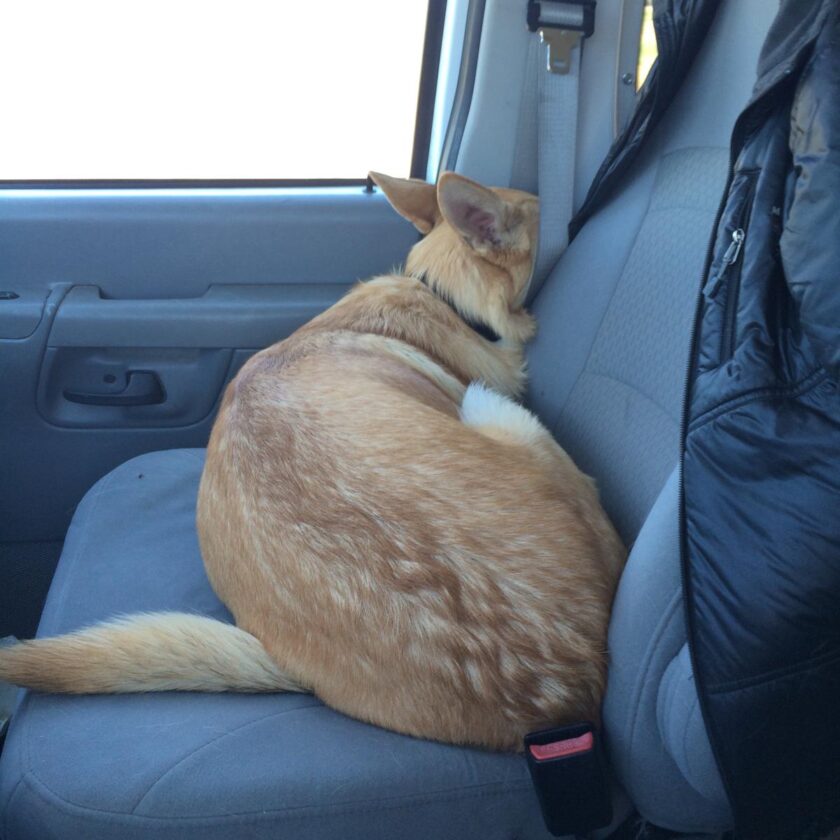
On the plus side, a well-behaved dog is the best traveling companion you could hope to have. And I can’t stress the “well-behaved” part enough. A dog that barks too much, runs away, or is otherwise generally a nuisance is…well, a nuisance. They are going to be tiring for you, and probably to everyone around you. I had a couple things going for me in this regard. My GSD is (and was) extremely well-trained. I could trust her off-leash almost anywhere; if I called she would return. That gave me some freedom to trust her, and gave her far more freedom than she would have had had she not been so well trained. Secondly, she slept in her crate. She never barks when she’s in her crate, so there was never a night that she woke me up barking.
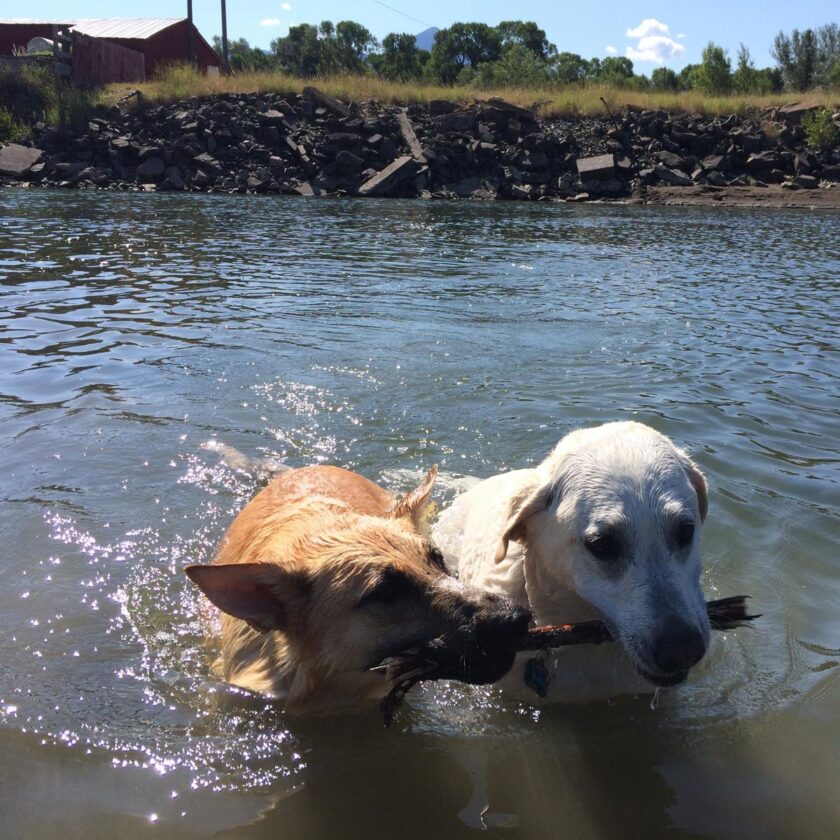
Back to the “best traveling companion” part – a dog can make a phenomenal traveling partner. They’ll go where you go and not ask any questions. They won’t complain about how long it’s taking, or why you’re going this way, or anything else. Your dog will love you unconditionally. Your dog will be an instant rapport-builder with others.
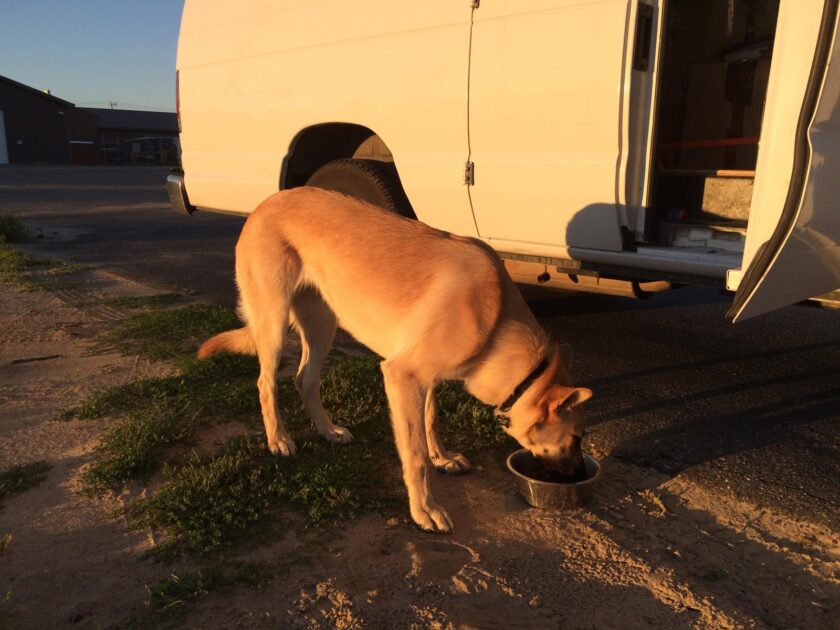
Now let’s look at a couple “lessons learned” from this trip.
On Possessions and “Stuff”
You will discover the possessions that really matter…and which ones don’t. Here I am, living in a van. Inside the van with me are my dog and every earthly possession that I own. How much stuff can you fit in a van and still have enough space to move around? Not much compared to just a few months prior… A few months ago I’d had a three bedroom house. I had furnished every room, including a living room, a den, three bedrooms, and an office. Not to mention a laundry/utility room full of stuff (and if you put a gun to my head I couldn’t tell you what that stuff was, so was it truly important?) and a garage full of mowers, trimmers, etc. How did I get here?
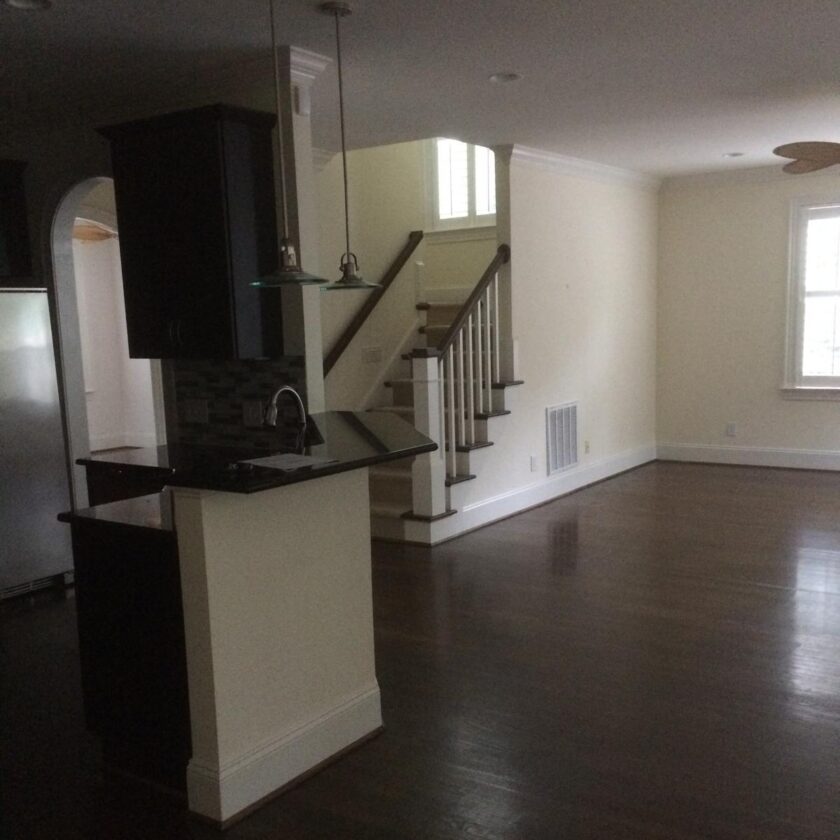
I purged. Partially out of necessity, partially out of the desire to no longer be held bound by my possessions. I am convinced that the more crap you own, the more enslaved to it you are. At some point your possessions own you. So I purged – free to friends, for sale on Craigslist, donated to the Salvation Army, and thrown in the trash. I purged until all that was left would fit comfortably into a van. I kept two categories of things: things that I needed to carry out basic life functions (clothing, bedding, etc.) and things that had some sentimental value to me.
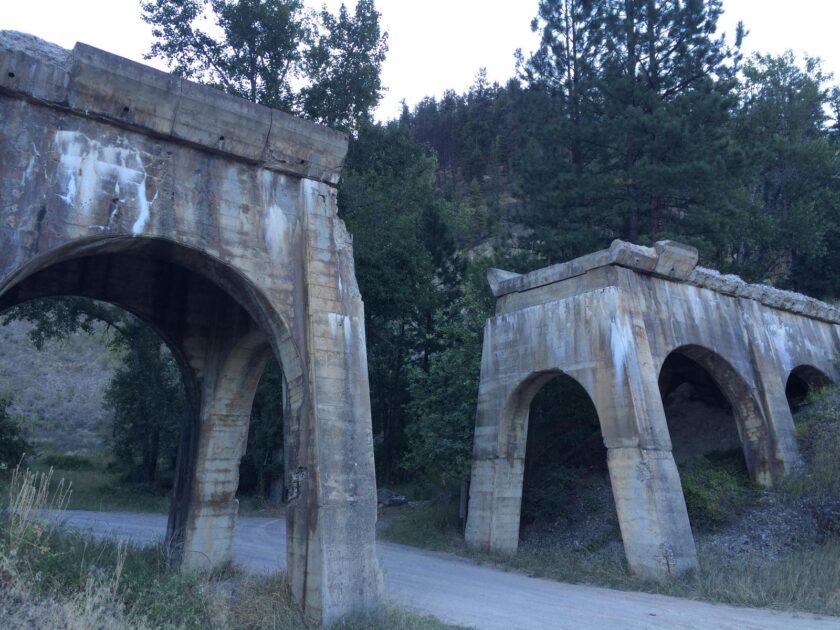
One thing you will doubtlessly learn from an experience like this: when faced with hard decisions you quickly learn what is important to you…and what is not. In the van I could look at everything that I’d chosen to keep and know beyond a shadow of a doubt that it mattered. It was important. It was chosen, selected, it had passed the test. It wasn’t there by default, it wasn’t there for fear or letting go or missing out. It was there because I wanted or needed it.
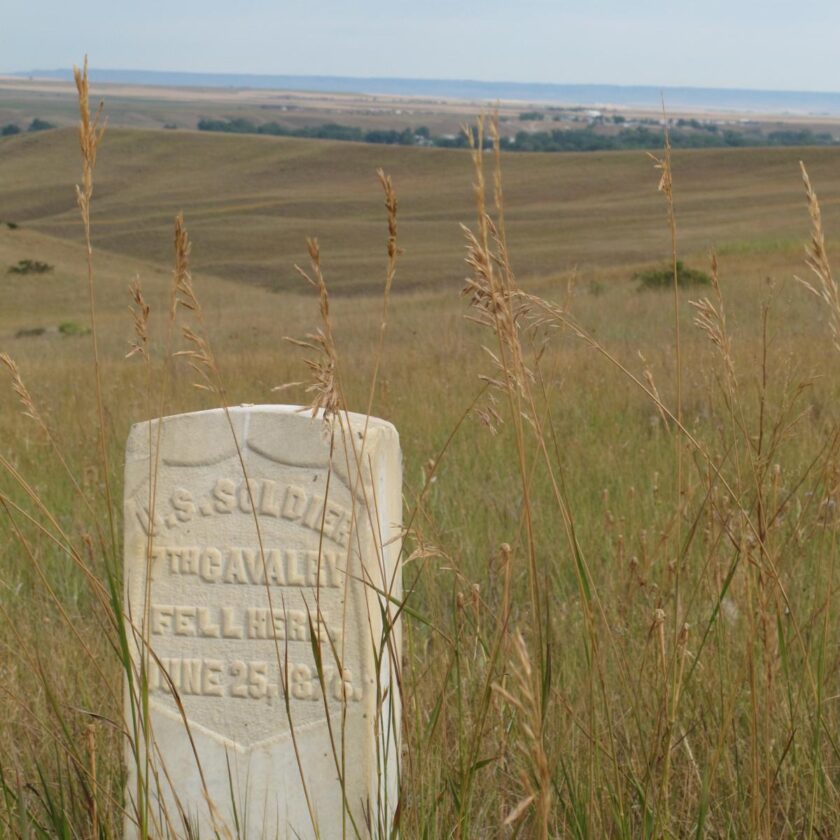
And now, just a few years later I once again have a house with two furnished bedrooms, one of which doubles as an office, plus a third bedroom that functions as a dedicated office. We have a basement full of workout gear and yard tools and appliances. Moral of the story? Things, stuff, possessions – they’re almost all replaceable. You’ll never miss most of them. The stuff that’s irreplaceable would probably fit in the trunk of your car.
On Freedom
You will discover that freedom is terrifying. This is the most difficult one to talk about. Most adults are “free” but haven’t chosen to experience anything approaching true freedom. Most of us are slaves to jobs that pay for the house that we don’t get to spend enough time in because we’re spending time in the car so it can take us to the job we hate because we have to pay for the house and the car… And on and on it goes. I’m not belittling; I’ve been that guy.
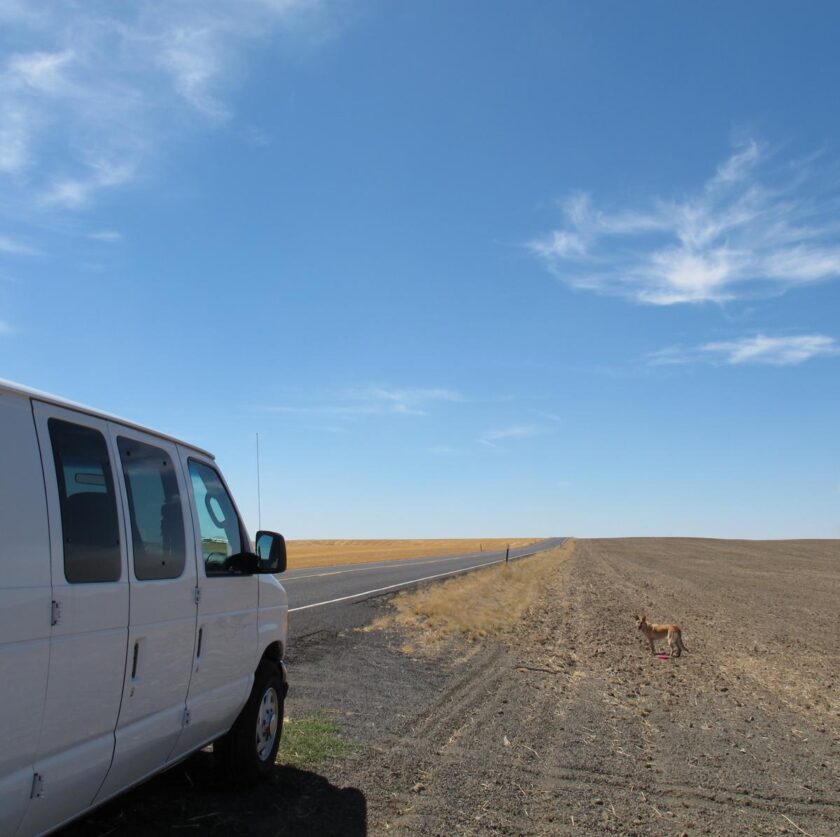
Most of you will never experience the following: you wake up and boil water on a JetBoil. You press a cup of coffee while your dog explores the woods nearby. You pack up, saddle up, and start the van. You pull out and 100 yards down the road there is a 4-way intersection. Both roads have two lanes, both are 45-mph roads…and here things start to get real. You realize that you don’t really know where either goes. Left, right, or straight? You have nowhere to be for weeks. No obligations, no pressure at all. You have near-total freedom, and suddenly you realize how terrifying it is.
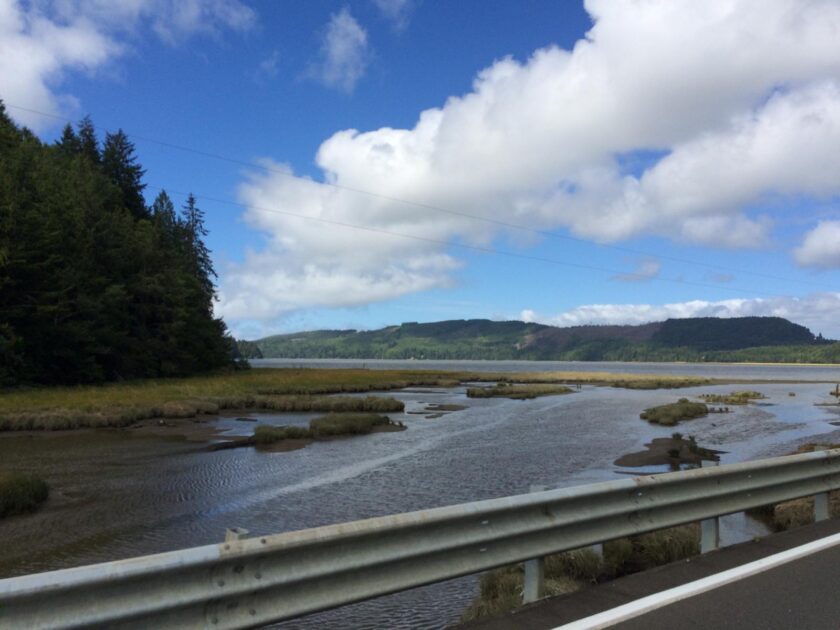
I remember once, on a curvy road along the Washington coast, bordered on the right by trees and the left by marsh, stopping for the night. I met up with some other travel bums. We all made our separate dinners, then shared a few beers. In the morning they were gone. I woke up, made coffee and pulled onto the road…and was crushed by what I thought was the weight of the freedom I had. I cried for ten minutes because when you can go anywhere, where do you go? I had never been this free, this untethered. It’s scary.
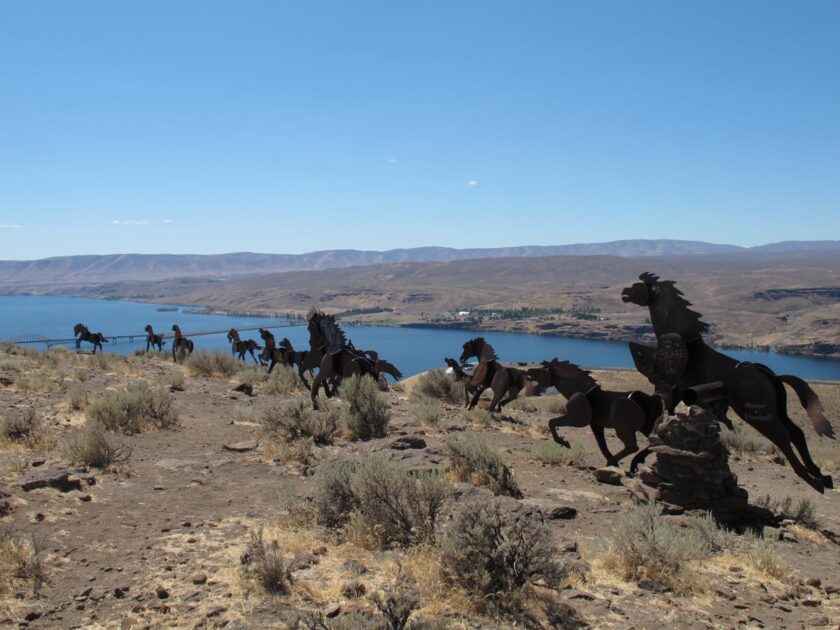
Once you push through the fear, though, you’ll find a liberation unlike anything you’ve ever felt. It saddens me the number of people who never know this kind of freedom. To limp along from high school to college. In college they acquire student loan and credit card debt. They get a job to pay for loan debt and credit cards. Rather than pay it off, they go to a graduate school and accumulate more and new debt. They borrow more to pay for marriage and a home, then kids… Most Americans spend significant portions of their lives transitioning from one form of debt to another, hoping for the “freedom” of retirement and old age.
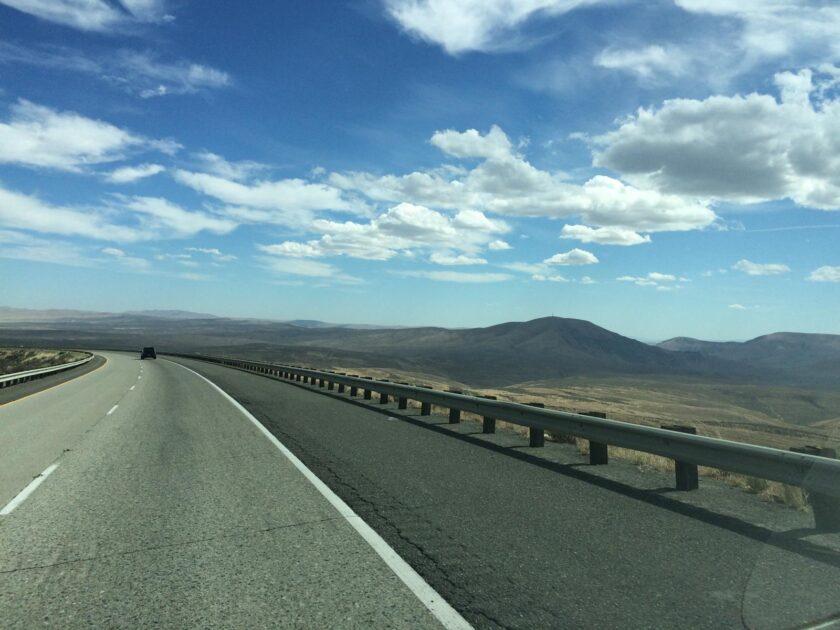
I imagine that very few of you will understand what I’m saying in this section. But I encourage you to get out and experience it firsthand. Make yourself capable of understanding. Experience real, terrifying, beautiful freedom!
On “… In a Van, Down by the River!” Jokes
You will discover that people love to mock what they don’t understand. People will absolutely shit-talk you. You will hear a million, “he lives in a van, down by the river!” jokes. Most of them are good-natured but they still get old. You’ll gamely chuckle, nod your head, and pretend this isn’t the hundredth time you’ve heard that joke today. Inside it will still tire you. Sometimes these wisecracks aren’t in good humor. Sometimes you’ll get a deadpan, straight-faced, “so you live in a van?”
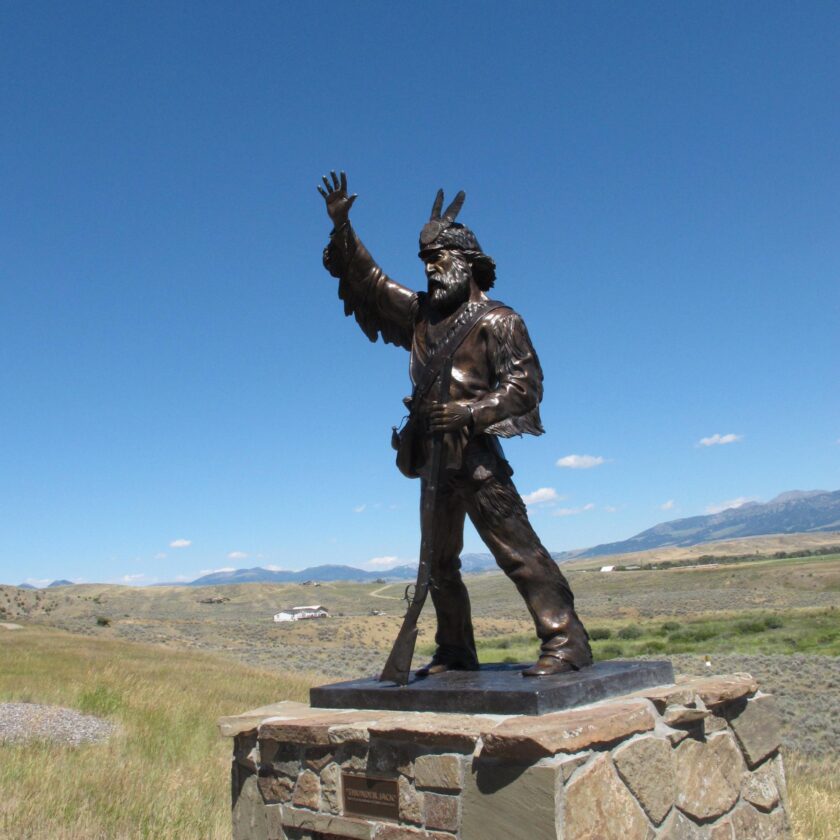
Most of this won’t really bother you, but it will make you careful about who you talk about your living situation with. You’ll probably end up subtly modifying how you frame your description depending on who asks. You’ll say you’re “on sabbatical” or “RV’ing for a while.” The worst is when someone looks upon you with pity, as if they wish they could help you. You want to tell the, “no, I’m fine!” but you don’t.
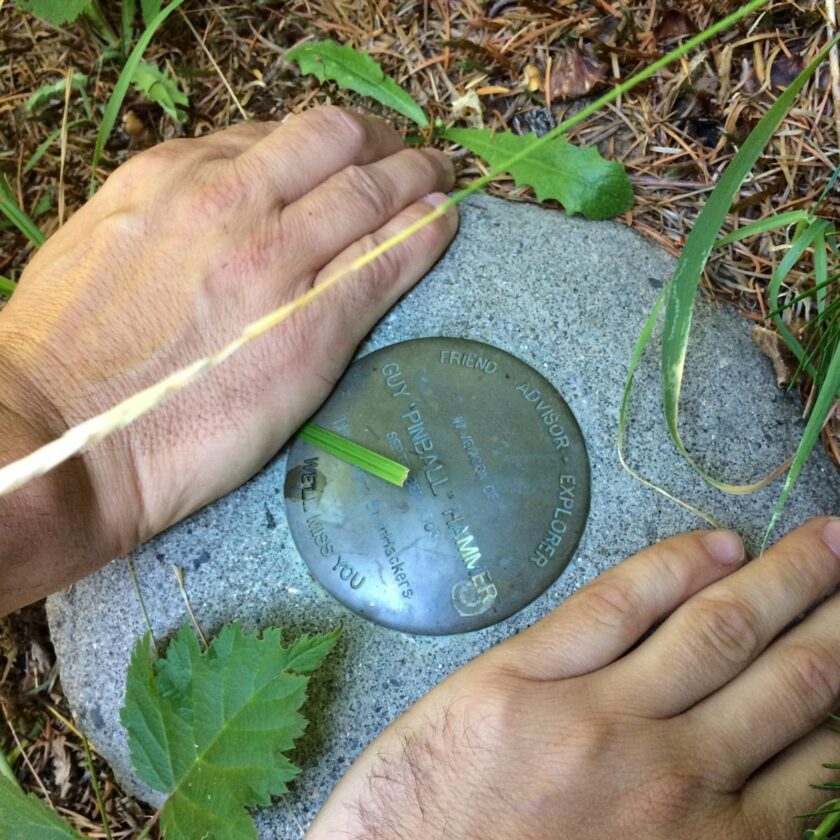
And one day, you wake up and you realize you’ve stopped caring what other people think. It will probably take a while for most of you. It did me, trained as I was in the ways of normal society, to wit: you grow up, you take on a ton of debt, you work for forty years while having a couple kids and taking a week off here and there, until you can retire. Many people have a very hard time wrapping their head around the idea that some people aren’t following that model. But eventually, I promise, you’ll stop caring about them and what they think.
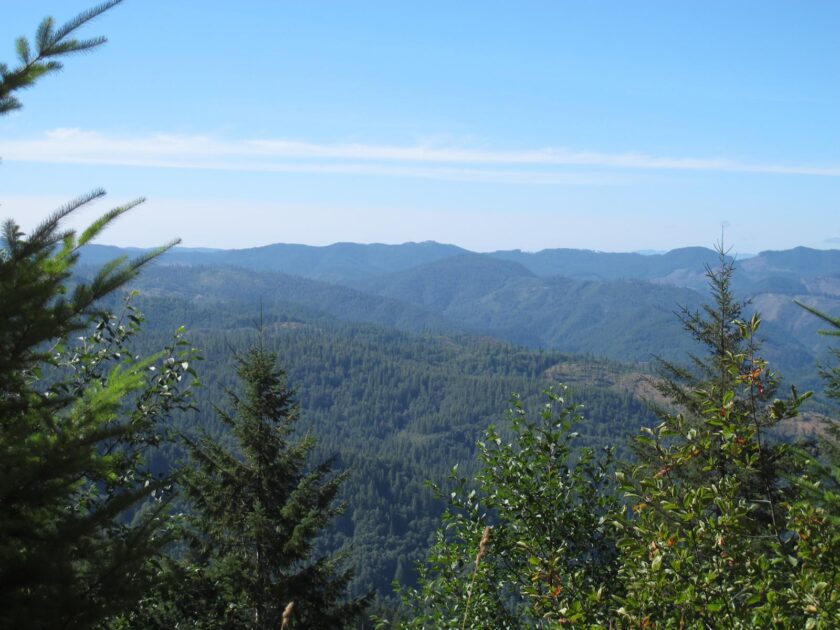
You’ll stop caring because you’ll realize why they think it. They’re scared. They know with almost total certainly they’ll never be bold enough to make such an opportunity for themselves. You’ve done something truly exceptional and its intimidating to people. But you did it. Revel in it!
Some Advice
I don’t know that I have a ton of advice to offer, but I’ll offer what I can.
Roll with the punches. I had some of the best days of my life out there on the road. Truly – I can’t even begin to tell you how amazing some days were. But I also had some objectively terrible times. Once, in Wyoming, my dog found a pile of rotten meat to roll in. The nearest gas station had neither a hose nor gallons of water. Not wanting to deplete my supply of gallon jugs I washed fetid meat out of her fur with 16 ounce bottles. It was a trying, exhausting, demoralizing experience. I know it’s easy, from the comfort of hindsight to say, “roll with the punches,” but try.
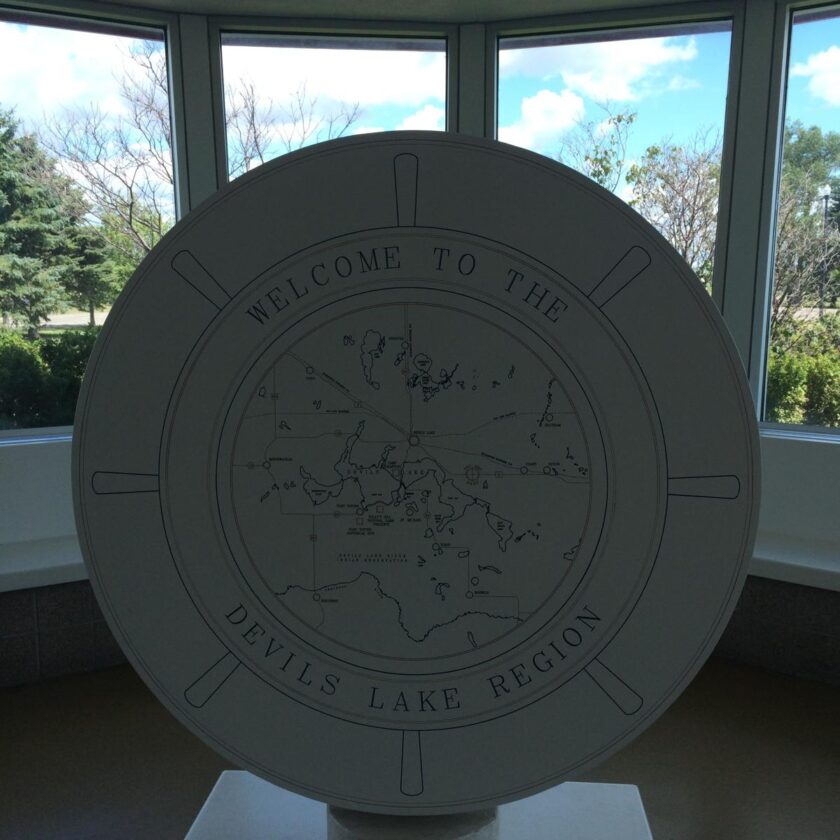
Have a spare key. Seriously. Have an extra key. I recommend having a simple, mechanical key cut and wear it around your neck. Your vehicle is your home. It is your everything. I never lost, or even seriously misplaced my key but after I got back from the trip I realized how disastrous that could have been.
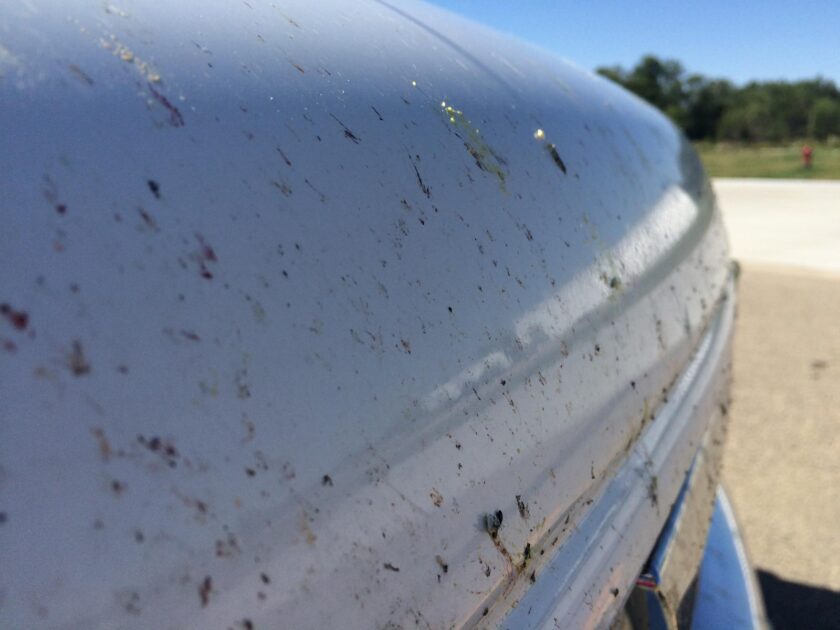
Second, make sure you have some recovery stuff for your vehicle. I realized that a flat tire in the middle of the Utah desert could be a difficult problem to solve, so I made sure my spare was up to snuff, then invested in some recovery stuff. I’ve written a previous article about vehicle EDC items; you should have those items at an absolute minimum. You should also know how to change a tire; keep in mind it might be different on your big-ass van rig.
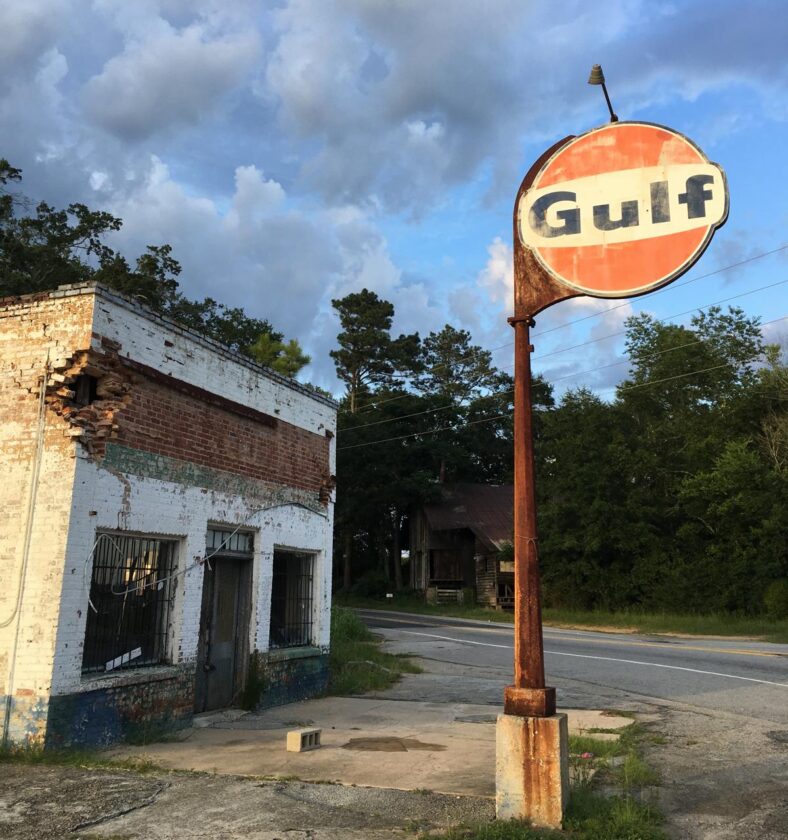
Talk to people. More importantly, listen to people. Man we live in an amazing country! It’s easy to sit at home and watch [fill in the blank] news and spend day after day otherizing our fellow Americans. Get out in the hinterlands and meet them. See what’s out there. People will love hearing your story. Likewise, they will share their stories – and food, and beer, and time – with you. It is extremely possible to make friends that you keep for life.
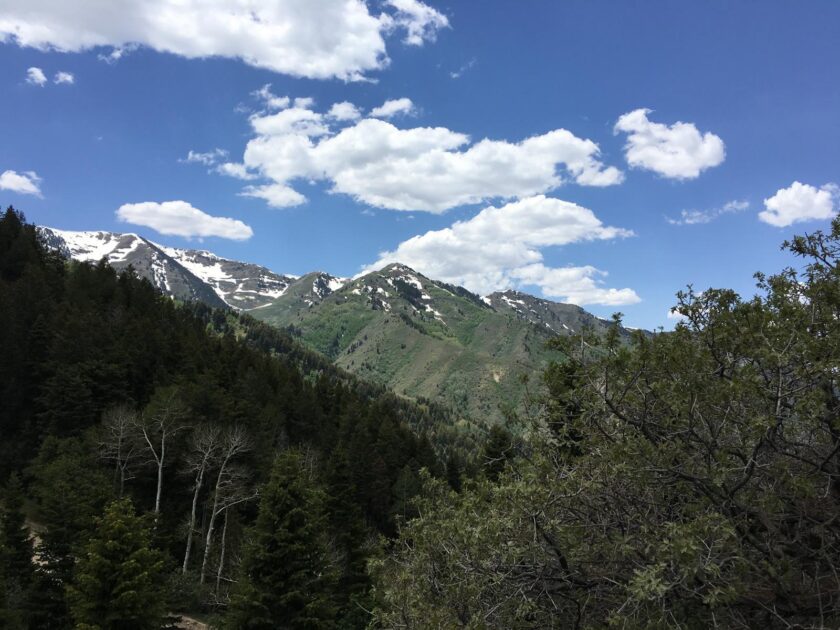
The MOST IMPORTANT Lesson
The most important lesson I learned? It’s this: you are living in the “good ol’ days” right now. Revisiting this trip via this article reminded me of so many memories, both good and bad. I certainly had my rough days on this trip. I think even at the high points of this trip I didn’t appreciate it like I should have. We never realize we are in the “good ol’ days” until they’re gone. You’re in them, RIGHT NOW. Appreciate that, appreciate what you have, enjoy it to the fullest. Because one day you’ll look back fondly on this time, right now, and wish you could go back. You can’t, of course, so get everything you can out of it now.
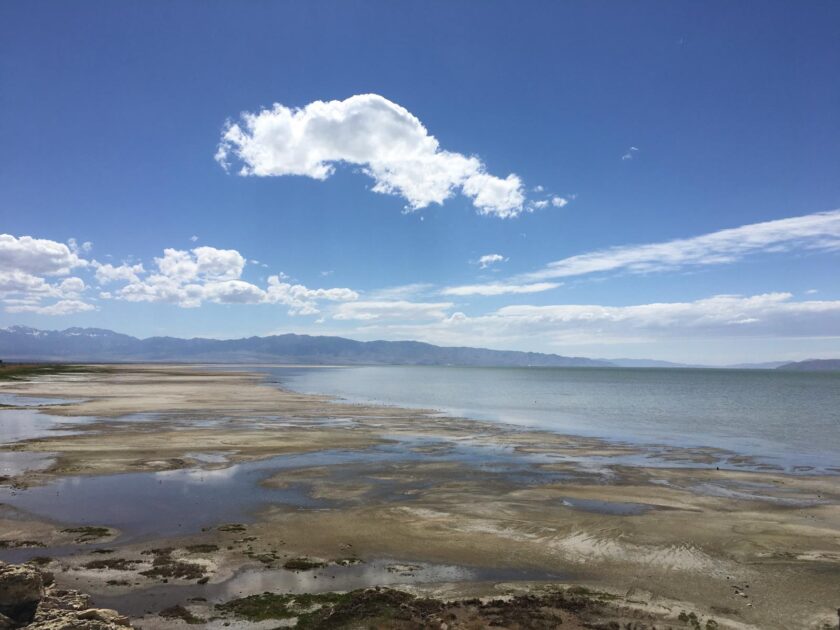
Closing Thoughts
“Twenty years from now you will be more disappointed by the things you didn’t do than by the ones you did do. So throw off the bowlines. Sail away from the safe harbor. Catch the trade winds in your sails. Explore. Dream. Discover.” This quote (often misattributed to Mark Twain) is cliche but it’s absolutely, 100%, dead-on-the-money true. You will regret the things you didn’t do.You’re very unlikely to regret the things you did. You don’t have to burn your life down and go live in a van but do something. Get out and do something that scares the hell out of you. If you don’t know what scares you, put down Facebook, turn off the news, put away the gaming system and start trying things. DO.
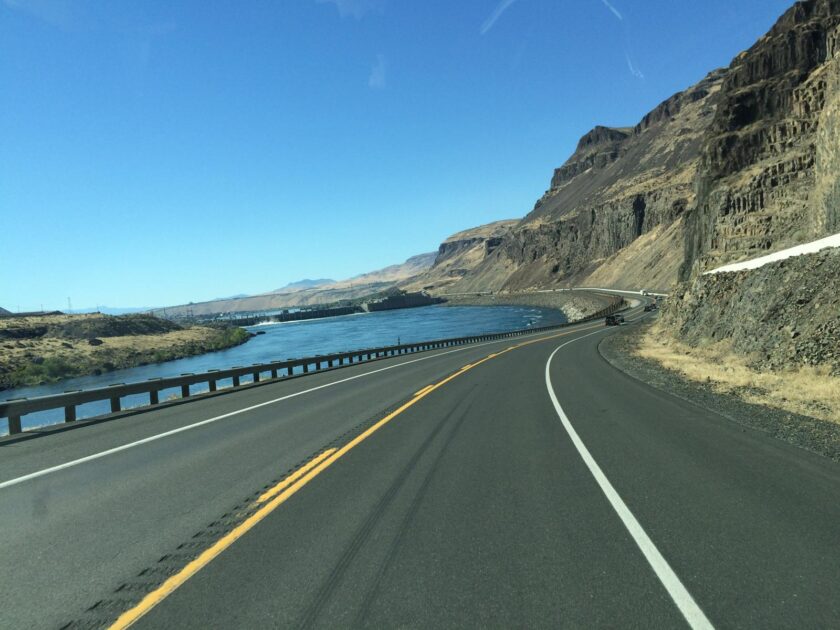
†And apparently I’ve had this quote wrong for many years. I’ve quoted exactly as I wrote it above but in Googling it for this article I found that the “real quote” is from G.K. Chesterton and reads, “an adventure is only an inconvenience rightly considered. An inconvenience is only an adventure wrongly considered.” Frankly, I like my version better.





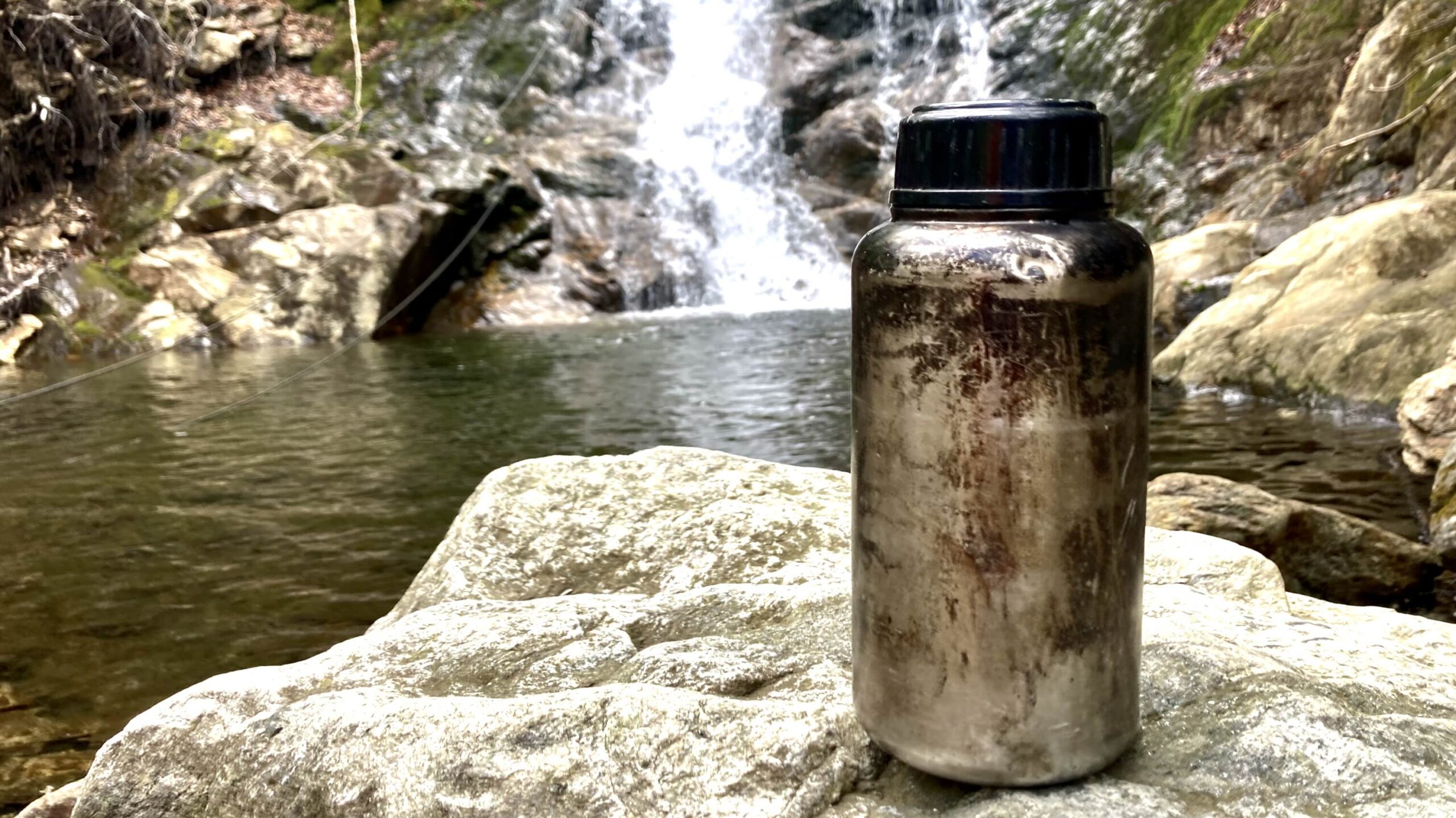
1 thought on “Ruminations on #VanLife”
Comments are closed.